

Zitierweise / cite as:
Payer, Alois <1944 - >: Chronik Thailands = กาลานุกรมสยามประเทศไทย. -- Bangkok um 1900/1908. -- Fassung vom 2014-03-08. -- URL: http://www.payer.de/thailandchronik/chronik1908a.htm
Erstmals publiziert: 2013-10-04
Überarbeitungen: 2014-03-08 [Ergänzungen]
©opyright: Dieser Text steht der Allgemeinheit zur Verfügung. Eine Verwertung in Publikationen, die über übliche Zitate hinausgeht, bedarf der ausdrücklichen Genehmigung des Herausgebers.
Dieser Text ist Teil der Abteilung
Thailand von
Tüpfli's Global Village Library
ช้างตายทั้งตัวเอาใบบัวปิดไม่มิด
|
Gewidmet meiner lieben Frau Margarete Payer die seit unserem ersten Besuch in Thailand 1974 mit mir die Liebe zu den und die Sorge um die Bewohner Thailands teilt. |
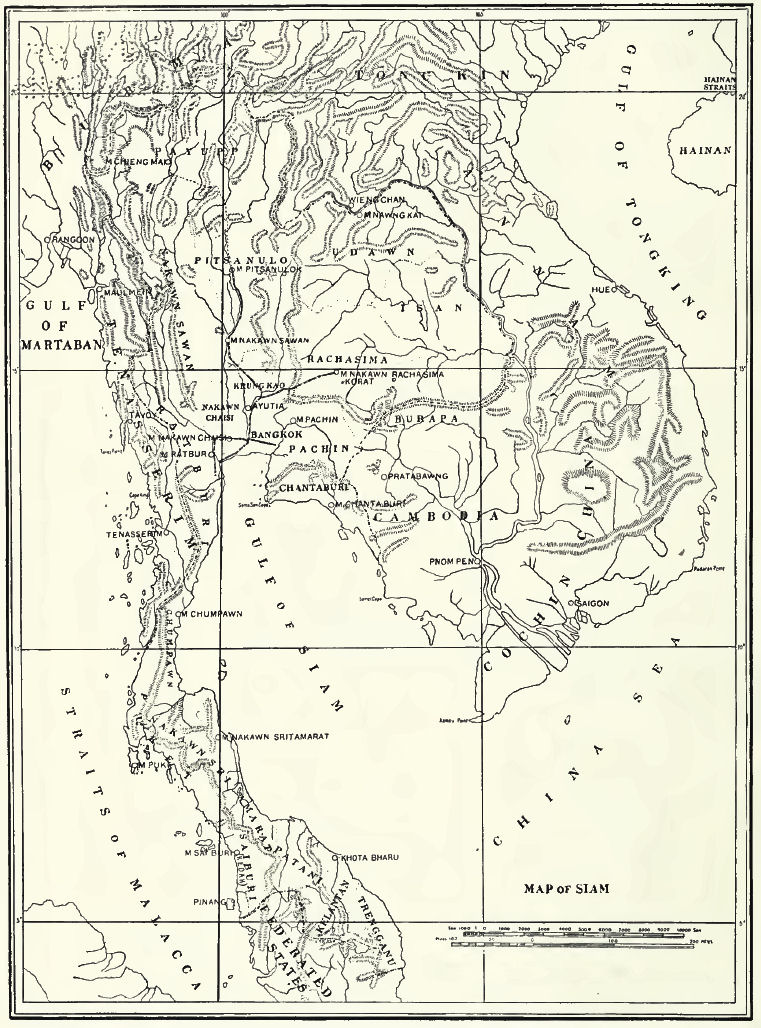
Abb.: Karte Siams um 1908
[Bildquelle: Twentieth century impressions of Siam : its history, people,
commerce, industries, and resources / ed. in chief: Arnold Wright. -- London
[etc.] : Lloyds, 1908. -- Vortitelblatt]
"Bangkok city proper, which is partly enclosed by a wall, contains the Grand Palace, most of the principal Government offices, and the residences of the greater part of the Siamese nobility, while the suburbs extend from Samsen in the north to Bangkolem in the south. The whole covers an area of about nine square miles, and contains over two hundred and eighty miles of public roads. All of these have been constructed within the past sixty years, and furnish a record of activity which reflects the greatest credit on the Local Government Department. The method of construction adopted at first was curious. Bricks were laid on their sides upon the ground and layers of sand spread over them. The roads thus formed looked like horizontal brick walls, but in wet weather they proved quagmires of red clay and in dry weather became inches thick in dust.
The opening up of the railways to places where regular road metal could be obtained, however, has remedied this state of things. The roads are being gradually improved each year, and as there are over 300 motor-cars now in use in Bangkok the improvement has naturally been appreciated. But, although roads are coming into existence in all directions, an immense amount of traffic still takes place on the canals, or "klongs," which traverse the city in all directions. All the perishable market merchandise is brought to the capital by these waterways; but the floating shops and floating houses, once such a conspicuous feature of the place, are rapidly disappearing, and in but a few years will have become curiosities.
Within the town limits there are some 2,000 bridges, many of which are very handsome structures. Upon each of his birthdays his Majesty the king presents one or more to the town, the fifty-fifth being the last. Of late years the authorities have made several attempts to introduce a satisfactory system of drains, but without success. The failure has been attributed generally to the absence of a regular water supply. This matter, however, is now receiving attention, and it is expected that about the year 1912 the entire city will be supplied with filtered water, brought from the river some sixty miles up-stream.
The river at Bangkok is somewhat like the figure 3, and the principal thoroughfare in the city, called the Charoen Krung, or New Road, follows, in the main, the direction of the river. It extends from the palace walls to Bangkolem, and the electric tramway runs along it for a distance of about six miles. To the north-east of the city proper is Dusit Park, which forms what may be termed the aristocratic suburb of Bangkok. A new palace is in course of erection here, and a large number of princes, nobles, and others connected with the Court have of late years built residences in the neighbourhood. The locality, formerly nothing but a jungle swamp, has undergone a marvellous transformation during the past ten years. Electric trams run through it, and link it with practically all the more important portions of Bangkok, and it is connected with the Grand Palace by a magnificent boulevard, which, with its three parallel avenues, is fully one hundred yards wide. To the south-east of this district lies the walled city itself, containing the Grand Palace, royal mint, military headquarters, law-courts, &c, besides numerous large and picturesque temples. Opposite the Grand Palace, and on the west side of the Menam, is the Rong Law, or naval dock. The walls which encircle the city proper are themselves not altogether without interest. They are constructed of brick, and are about twenty feet high, and from fifteen to twenty feet thick at the base ; the upper portion forms a platform, protected with a wall perforated throughout its length with ornamental machicolations. At intervals the walls are surmounted by towers, with embrasures for artillery, but these are fast falling into decay, and in many places the handsomely ornamental and fortified gateways have been removed to allow for the widening of the roads. The bricks used in these walls are small but extremely durable.
South of the walled city is to be found the main commercial part of Bangkok. Along the riverside is a knotted congeries of narrow lanes, known as Sampeng, which in all their characteristics are an exact replica of a Chinese native city. Here are to be found the gaudily begilt opium dens, the theatres, maisons de plaisir, and similar institutions of Canton, with the addition of the gambling-house and police-station of Siam. This district is the real "bazaar" of Bangkok, and in it almost any known article may be purchased, from Siamese Buddhas (made in Birmingham) and ancient Siamese pottery (manufactured the year previously in Japan) to piece goods and steamboats. The district has a somewhat unsavoury atmosphere, but is as orderly as any other district in Bangkok, and apparently, for the Chinaman, just as healthy. The locality has few charms for the Europeans resident in Bangkok, who rarely go there except for business purposes, but it should not be entirely ignored by the tourist, who will probably find much to interest him both in the habits of the people and in their methods of conducting their trade.
A little to the south and east of Sampeng is Bangrak, where most of the foreign legations and the majority of the banks and offices of Western business people are situated, and from thence to Bangkolen Point there is a long string of rice and saw mills, docks, ironworks, &c.
All the principal streets in Bangkok are lighted by electricity, supplied under contract to the Government by the Siam Electricity Company, Ltd., a Danish concern, which also owns one half of the twenty-five odd miles of electric tramways, and has what is tantamount to a controlling interest in the remainder.
The visitor's first impression of Bangkok is not favourable. After landing at Windsor's Wharf, he has to pass through the lower part of the town, which has not yet received the same amount of attention that has been bestowed by the authorities upon some of the other districts, and many of the old squalid bamboo and attap hovels still line the roadway. But in its human element the street life is extremely interesting. It is wonderful to see the representatives of so many nationalities rubbing shoulder to shoulder in the different thoroughfares or jostling one another in the market-place. The crowds which throng the streets are composed of Siamese, Chinese, Malays, Tamils, Bengalis, Madrassis, Pathans, and half a score of other tribes and castes of British India, Burmese, Ceylonese, Javanese, Cambodians, Annamites, Laos, Shans, and Mohns, all of whom retain sufficient of their national dress and characteristics to impart an idea of their origin. The spectacular effect of such a gathering is enhanced by the kaleidoscopic variety of the colours worn.
The national dress of the Siamese is the "panung," a form of covering not altogether dissimilar to the Malay sarong, which is worn by all classes and by both sexes. Although about as simple as it is possible to imagine, the panung is by no means an easy garment for the tyre to don satisfactorily. It consists of a single strip of cloth about one yard wide and four or five yards in length. The approximate centre is placed at the back of the waist and the cloth is then wrapped round the loins and a portion passed between the knees and tucked into the part round the waist at the back, so that something like a very baggy pair of knickerbockers is formed. Queer garment though it is, the panung is exceedingly comfortable, and suits the people well. It is made of all manner of materials, and costs from a few cents up to hundreds of ticals.
In addition to the panung the men wear short white tunics and European shoes and stockings, while the women content themselves with a long strip of cloth about half a yard wide, known as a "pahom," which is generally wrapped loosely under the arms or draped gracefully over their shoulders.
In former years it was considered lucky to wear panungs of a certain colour on the different days of the week, members of the royal house only wearing red panungs all the time.
The fact that a majority of the women in Siam wear their hair cropped short occasionally makes it difficult to distinguish their sex, as the clothing of the men and women is sometimes almost identical. The origin of this custom among the women of keeping their hair short is variously explained ; but the most picturesque story, and the one which gains the most credence, is that which tells how the women, by their muscular and warlike appearance, once saved their country from invasion. On one occasion, during the days when Lopuri was capital and alarums and excursions from Burmans, Shans, Peguans and other neighbours were the order of the day, a strong Burman force put in an appearance. It was harvest-time, and most of the men-folk were at work in the fields. Some genius suggested that if the women cut their hair, took what arms they could muster, and "manned" the battlements, the enemy, seeing such a strong force on the qui vive, would promptly retire. All transpired just as had been predicted, and the enemy, taken by surprise, retreated in confusion. The women of Lopuri, on seeing this, started in pursuit and chased them to a safe distance. Such is the tradition, which may or may not be founded on fact. It seems, however, to be generally credited throughout Siam."
[Quelle: Twentieth century impressions of Siam : its history, people, commerce, industries, and resources / ed. in chief: Arnold Wright. -- London [etc.] : Lloyds, 1908. -- S. 240ff.]
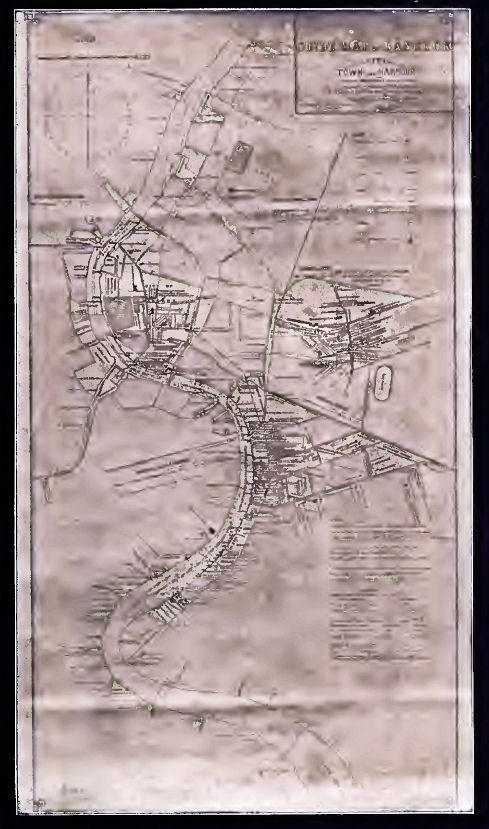
Abb.: Plan von Bangkok
[Bildquelle: Twentieth century impressions of Siam : its history, people,
commerce, industries, and resources / ed. in chief: Arnold Wright. -- London
[etc.] : Lloyds, 1908. -- S. 244]
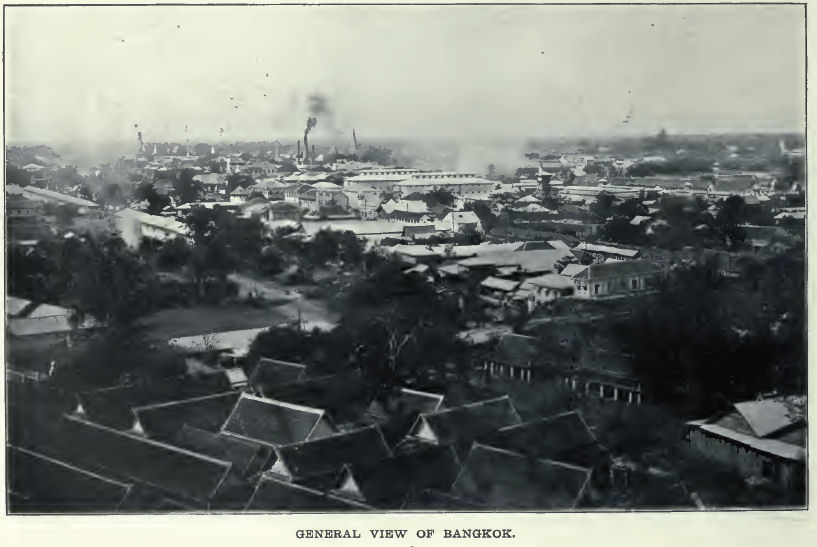
Abb.: Bangkok
[Bildquelle: Twentieth century impressions of Siam : its history, people,
commerce, industries, and resources / ed. in chief: Arnold Wright. -- London
[etc.] : Lloyds, 1908. -- S. 238]
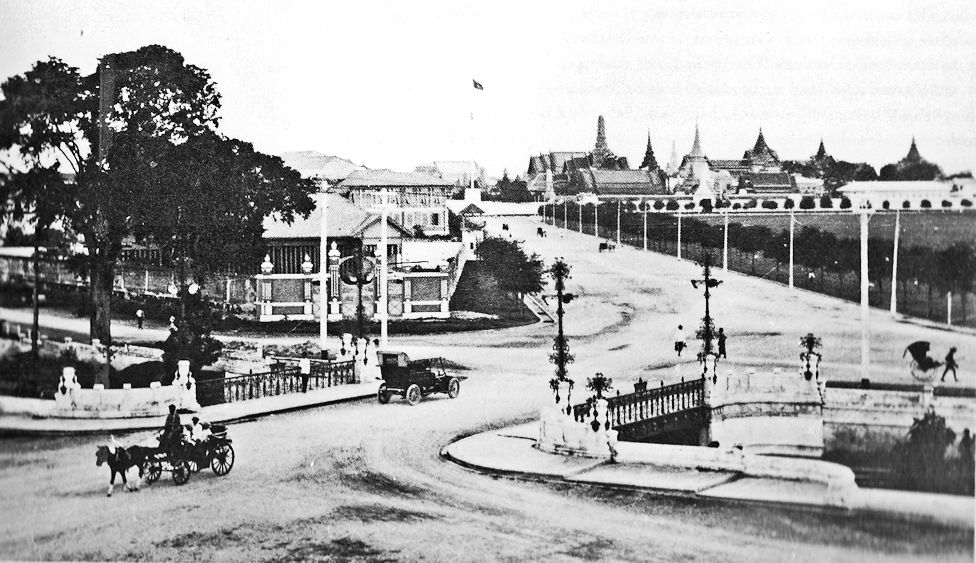
Abb.: Blick Richtung Sanam Luang (สนามหลวง)
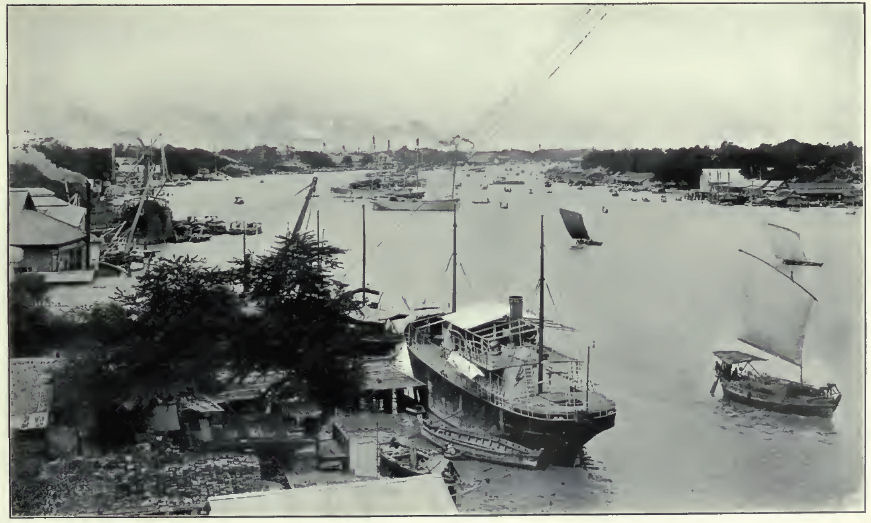
Abb.: Chao Phraya (แม่น้ำเจ้าพระยา),
Bangkok
[Bildquelle: Twentieth century impressions of Siam : its history, people,
commerce, industries, and resources / ed. in chief: Arnold Wright. -- London
[etc.] : Lloyds, 1908. -- S. 135]
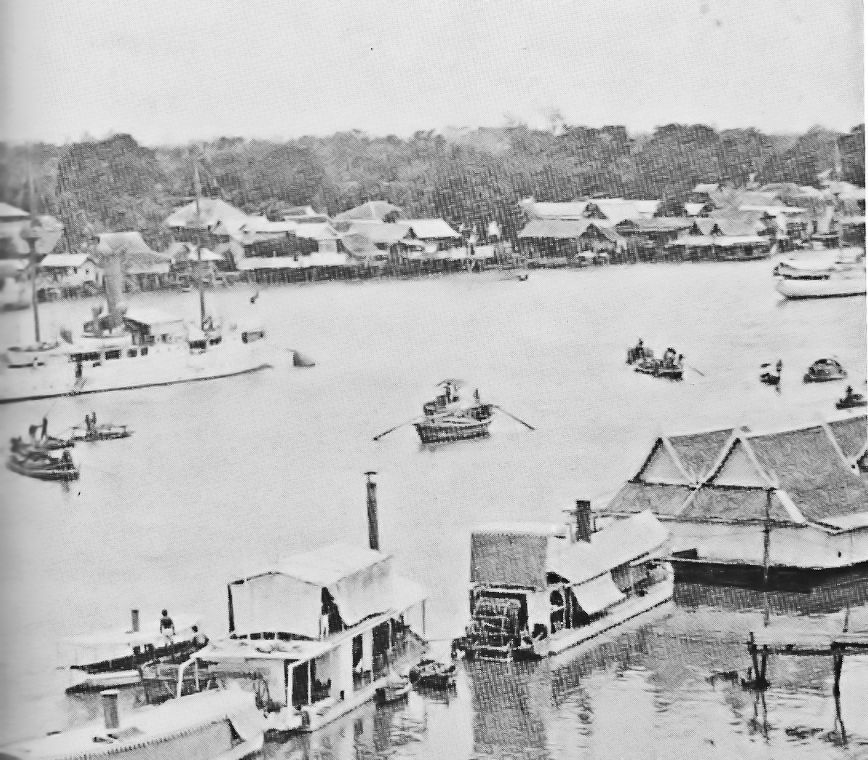
Abb.: Abb.: Chao Phraya (แม่น้ำเจ้าพระยา),
Bangkok
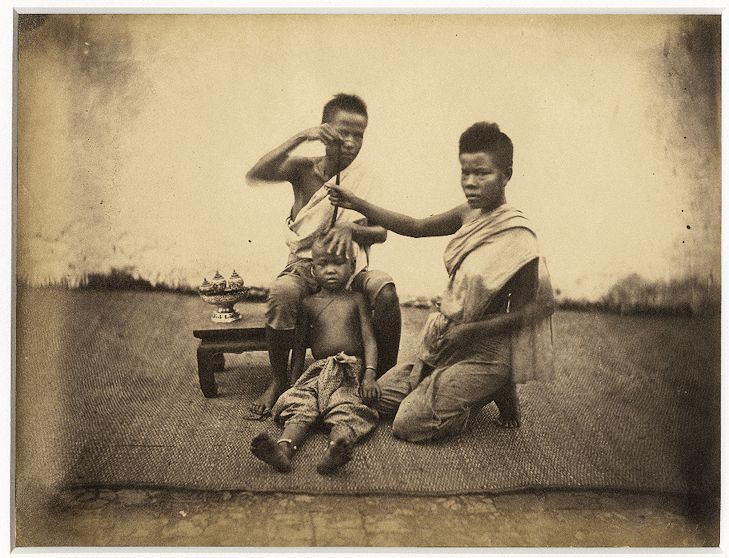
Abb.: Haarschneidezeremonie, ca. 1900
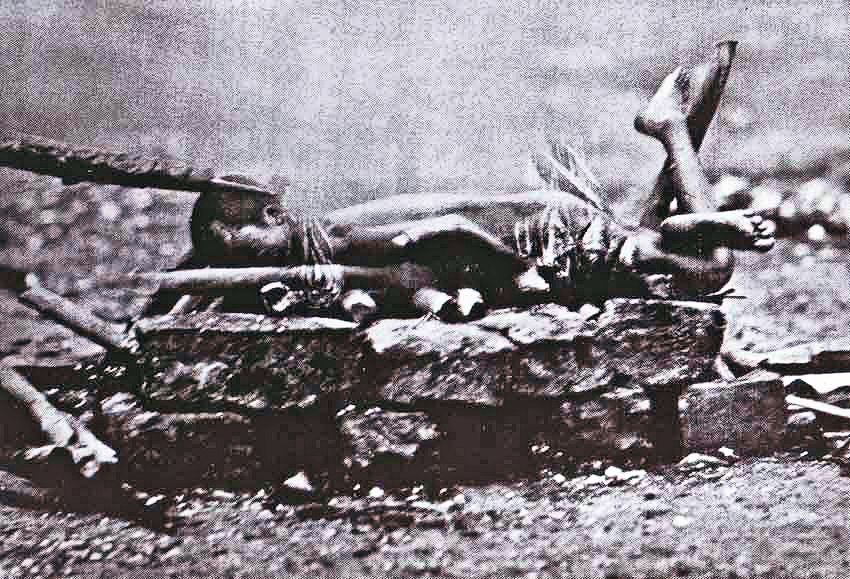
Abb.: Leichenverbrennung, Wat Saket (วัดสระเกศราชวรมหาวิหาร),
angkok, ca. 1900
"Only in quite recent years have thoroughfares with any real pretensions to the name existed in Bangkok. Formerly the traffic was confined to the klongs, and even now the chief means of transport are the small native craft which ply up and down these waterways. Fifty years ago, indeed, the city was known as "the Venice of the East." The first streets laid out were constructed in a very primitive manner. It was considered sufficient to take the earth from the sides of the roads in order to raise the centre, with the result that the roads were edged with swamps, at the rear of which the houses were constructed on piles. To make the roads firmer it was usual to spread a light layer of broken bricks and stones on the surface ; consequently in the rainy season the thoroughfares were reduced to sloughs and puddles and quickly became impassable. Within the last decade or so the advantages of macadamising the roads with broken bricks and flints have been recognised, but the system has not been undertaken with any degree of thoroughness, the materials being merely spread over the roads, and the work of rolling them in being left to the chance instrumentality of the vehicular traffic. In that portion of the city, however, between the river and the city wall wherein are the King's palace and the residences of many of the Siamese princes, the work of road-making has been carried out with more care ; better materials have been used, and the steam-roller has been employed with advantage. The improvement has been the more marked since the King and other members of the royal family have taken to motoring ; indeed, some of the thoroughfares are maintained in a far more efficient condition than is actually demanded by the traffic upon them.
As the water of the river is not stored anywhere, street watering is effected by the most primitive means by Chinese coolies bearing watering-cans, which they fill from the klongs or from the gutters by the roadside. They carry the cans suspended from a yoke, and as they run along they tip up the buckets which they hold, one in each hand. As the water taken from the gutters is usually in a state of putrefaction, it is perhaps needless to add that there are serious objections to the methods of street-watering which now obtain. A system of revolving watering appliances has, however, been tried, but has had to be abandoned on account of the weight of the appliances, while other schemes which have been suggested to the Government have not yet been put to the test.
The first streets were made without pavements. Now, however, pavements are found in all the new streets, and have been added even to the old ones ; but the lower classes make use of the pavement as annexes to their houses and shops to such an extent that in many places the pavements have entirely disappeared. No law has yet been passed to prevent this overrunning of the side-walks, so that even when it is possible—as, for example, after a fire—to re-establish the alignment of the streets, there is difficulty in remedying the evil. Differences and disputes which arise on these occasions as to boundaries are usually settled easily and amicably when Siamese only are concerned ; but such is not the case when foreigners are the interested parties. They regard such adjustments as sales of land on their part and demand high prices accordingly. Similar difficulties present themselves when new roads have to be cut ; it is often necessary to deviate the direction and make detours to avoid the property of foreign subjects and protégés.
Sanitation.
No proper system of drainage exists in Bangkok. The klongs are used as sewers by the people dwelling on their banks, and are scoured twice daily by the action of the tide. In the streets away from the klongs sullage water and sewage matter is discharged into the drains which run by the roadside. Some of these drains are now closed, but originally they were all open. They are solidly built of brick and concrete, and in many instances are connected with the klongs by sluice-gates, so that their cleansing may be easily effected by means of the tide, sweepers being employed to assist the process. The drains also serve to carry off the surface-water. Suggestions for the further improvement of the drainage of the city have from time to time come under the consideration of the authorities. Of these the most acceptable to the Government has been that which advocated the adoption of a hydro-pneumatic system, but so far the system has not been given a trial.
Refuse is removed from the neighbourhood by means of carts provided by the authorities for the purpose, and is deposited in various open spaces along the roadside, and in uninhabited parts of the town. The suggestion to build furnaces for the incineration of refuse has been put forward, but has not yet been acted upon.
The Water Supply.
Bangkok possesses no water supply. The lower classes use the water from the river and klongs, with deplorable results from the point of view of health. In the dry season, and more especially during the months of February, March, April, and May, a lamentable state of things prevails, cholera claiming thousands of victims from among the poorer classes. The European population exercise more wisdom in this respect, never using water even for washing and bathing without the addition of alum. For household purposes rain-water is used. It is collected in steel tanks, into which it flows from the roofs ; and during the heavy rains every effort is made to store sufficient water for the needs of the dry season, which lasts from November till May.
Unsuccessful attempts have been made to solve the question of water supply by deep borings. An artesian stream was tapped at a depth of 423 feet, but analyses at Bangkok and at the Pasteur Institute at Saigon proved that the water was impure. Further borings were made, but at a depth of 650 feet difficulties manifested themselves, and, proving insuperable, brought the work to a standstill. At present the only wells in Bangkok are those owned by commercial houses.
Besides the scheme for artesian well boring water has been drawn from the Menam, at a point some fifteen miles above the city, and brought by means of a canal to the centre of the town, where it is pumped into a reservoir, 60 ft. in height. It is filtered, and purified with ozone, and is then ready for use. The scheme, which was advocated and carried through in its experimental stage by Mr. Mahotiere, city engineer, has received the approval of Government, but for want of sufficient funds has not been put into general use.
In a city traversed in all directions by canals there must of necessity be a number of bridges ; and, for the reason that clearance must be given to the roofs of boats plying on the various water-thoroughfares, the bridges in Bangkok are carried to a considerable height above ground-level, and are therefore steep and awkward for vehicular traffic. The earlier bridges were simply structures of beams and cross planks, resting on brick supports. Owing to the unsuitable nature of the ground, and to the little care exercised in their erection, these supports have, in many cases, sunk into the bed of the klong, leaving insufficient room for boats to pass beneath them. The reconstructed and new bridges are of iron, and are built to carry a macadamised roadway. His Majesty the king takes great interest in this work, as in other matters concerning the public welfare ; and every November, on the anniversary of his birthday, the foundations of a new bridge are laid, the cost of the bridge being partly defrayed by his Majesty. On these "anniversary" bridges a slab is fixed bearing the king's initials, the date, and his Majesty's age. The bridge to be built this year (1908) will be of importance as commemorating also the forty-first year of the king's reign. It will be constructed of armoured concrete, ornamented with enamelled sandstone, and will have a length of 27 feet."
[Quelle: L. R. de la Mahotiére in: Twentieth century impressions of Siam : its history, people, commerce, industries, and resources / ed. in chief: Arnold Wright. -- London [etc.] : Lloyds, 1908. -- S. 291f.]
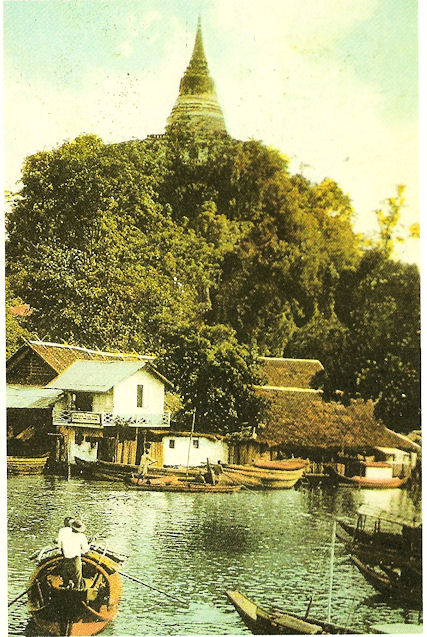
Abb.: Bangkok um 1900: Golden Mountain (ภูเขาทอง),
Postkarte, um 1900
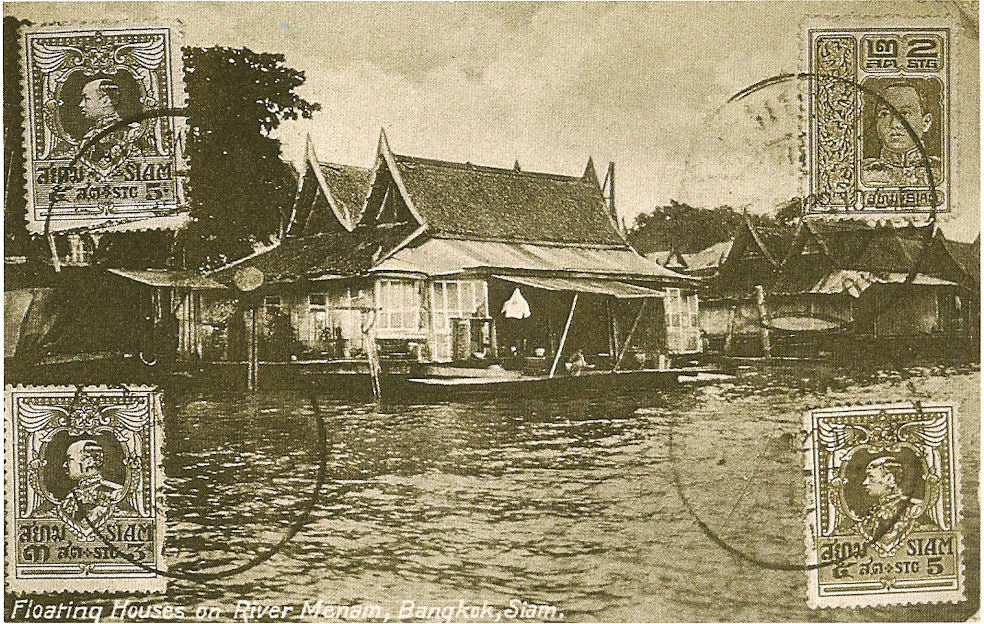
Abb.: Bangkok um 1900: schwimmende Häuser, Postkarte, um 1900
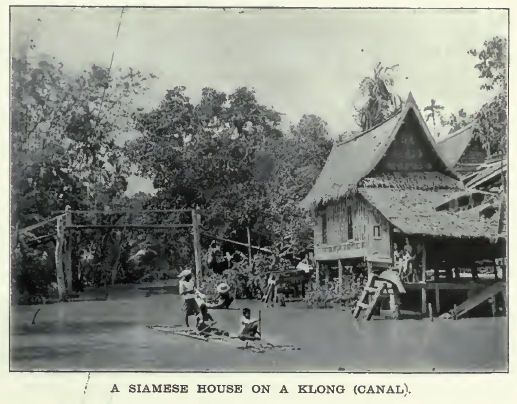
Abb.: Haus am Klong (คลอง)
[Bildquelle: Twentieth century impressions of Siam : its history, people,
commerce, industries, and resources / ed. in chief: Arnold Wright. -- London
[etc.] : Lloyds, 1908. -- S. 247]
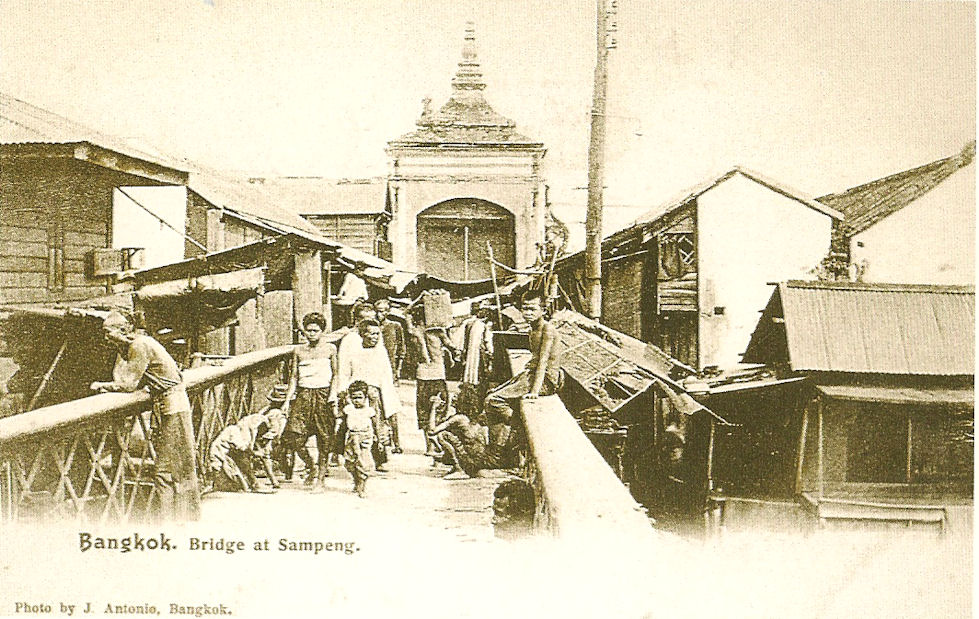
Abb.: Bangkok um 1900: Brücke im Chinesenviertel Sampeng (สำแพ้ง), Postkarte, um
1900
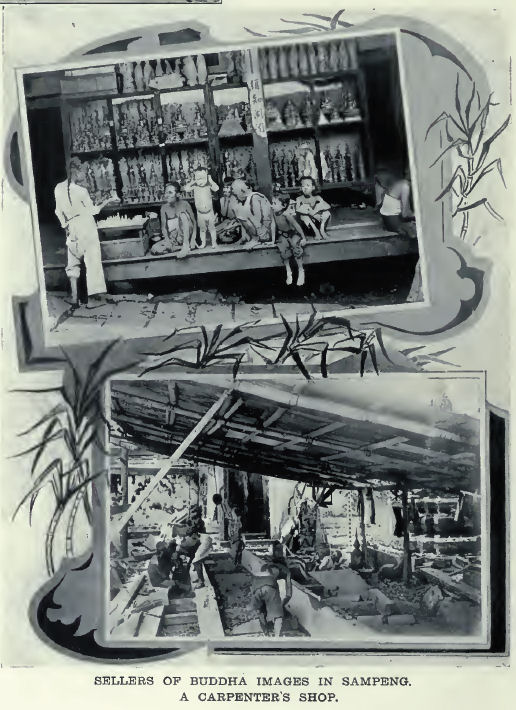
Abb.: Devotionalienhändler im Chinesenviertel Sampeng (สำแพ้ง),
Zimmermannswerkstatt
[Bildquelle: Twentieth century impressions of Siam : its history, people,
commerce, industries, and resources / ed. in chief: Arnold Wright. -- London
[etc.] : Lloyds, 1908. -- S. 246]
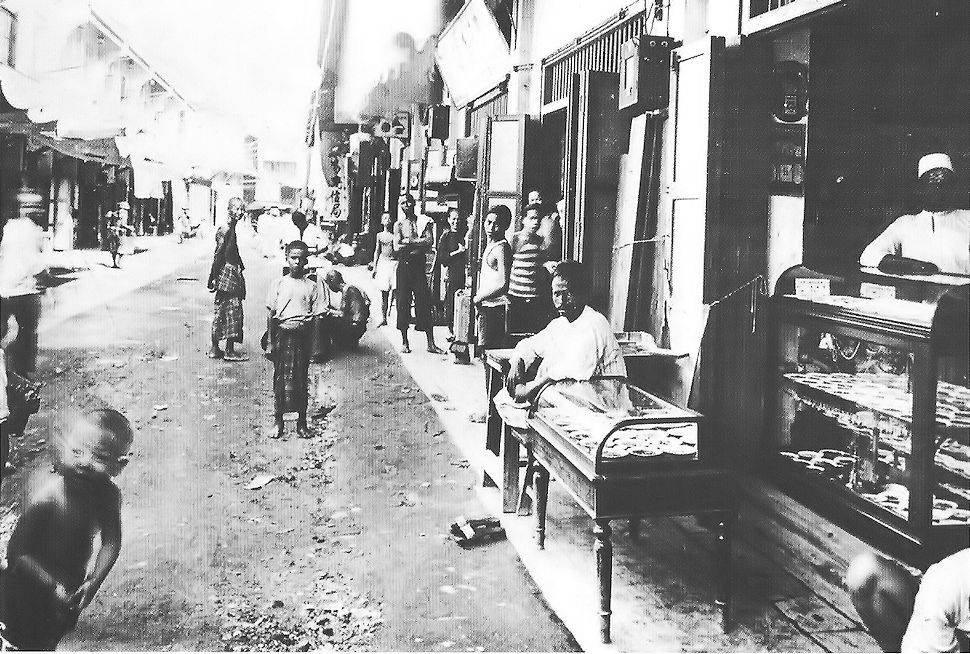
Abb.:
Chinesenviertel Sampeng (สำแพ้ง)
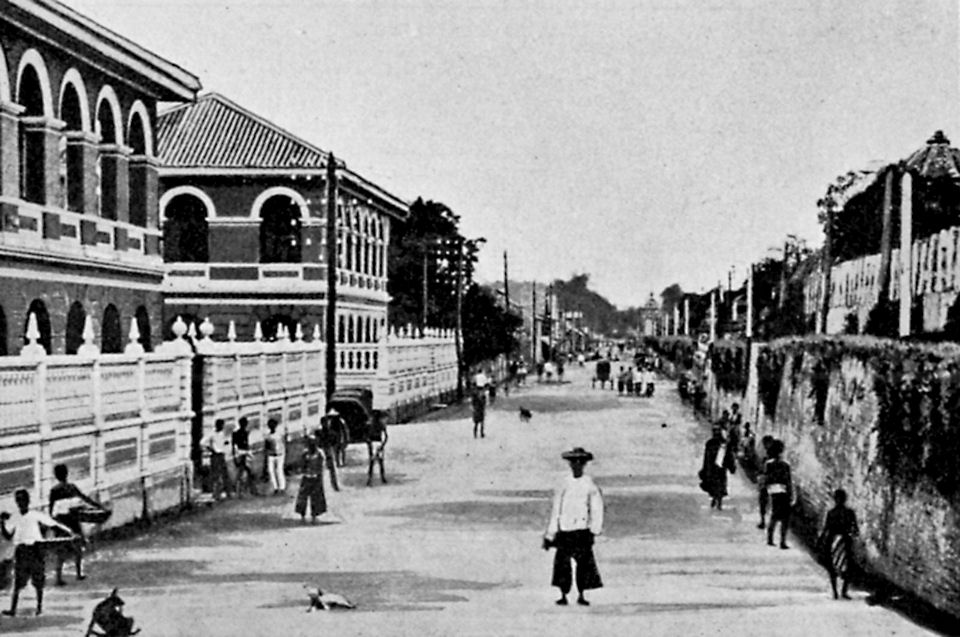
Abb.: Mauer um den Königspalast, Bangkok, ca. 1900
[Bildquelle: Welt–Panorama Album 2, Amerika–Asien, Myrrholin-Gesellschaft,
Frankfurt a. Main, 1904]
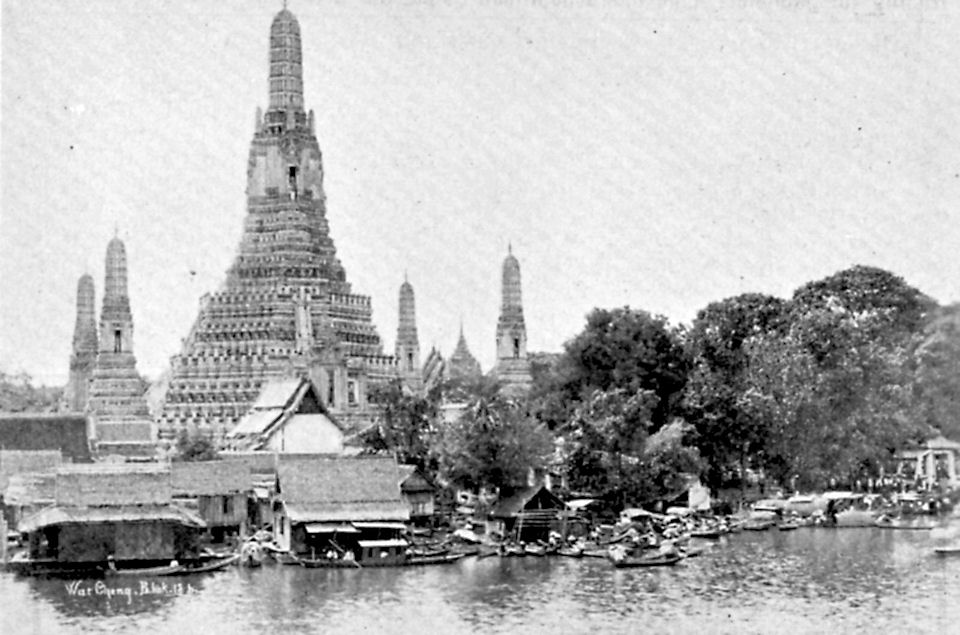
Abb.: Wat Arun (วัดอรุณ),
Bangkok, ca. 1900
[Bildquelle: Welt–Panorama Album 2, Amerika–Asien, Myrrholin-Gesellschaft,
Frankfurt a. Main, 1904]
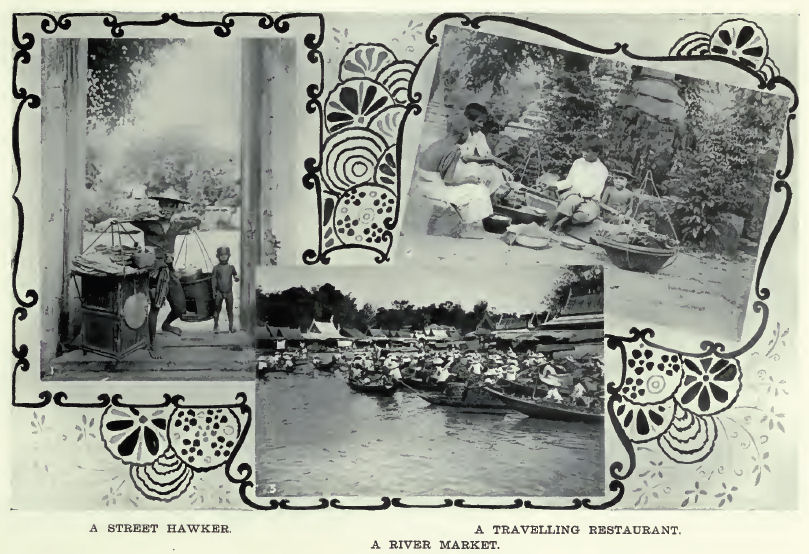
Abb.: Handel und Wandel
[Bildquelle: Twentieth century impressions of Siam : its history, people,
commerce, industries, and resources / ed. in chief: Arnold Wright. -- London
[etc.] : Lloyds, 1908. -- S. 245]
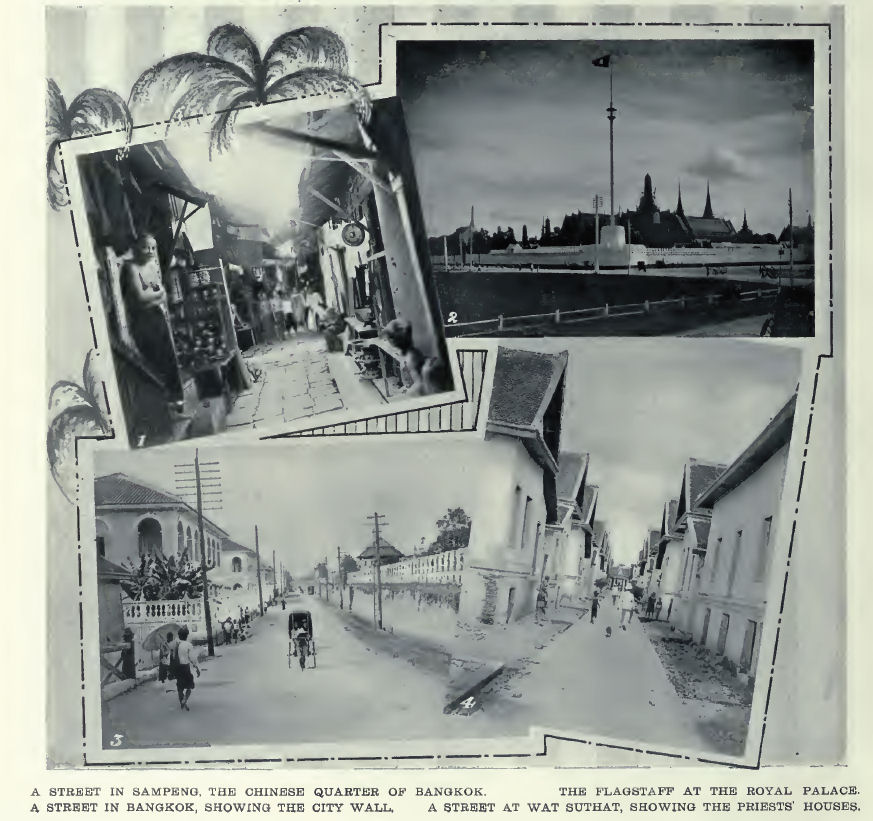
Abb.: Straßenszenen
[Bildquelle: Twentieth century impressions of Siam : its history, people,
commerce, industries, and resources / ed. in chief: Arnold Wright. -- London
[etc.] : Lloyds, 1908. -- S. 242]
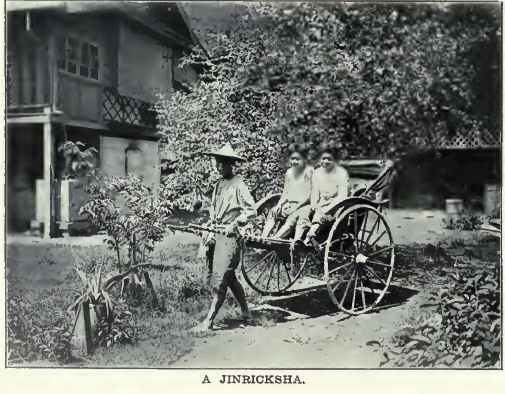
Abb.: Rikscha-Kuli - รถลาก
[Bildquelle: Twentieth century impressions of Siam : its history, people,
commerce, industries, and resources / ed. in chief: Arnold Wright. -- London
[etc.] : Lloyds, 1908. -- S. 249]
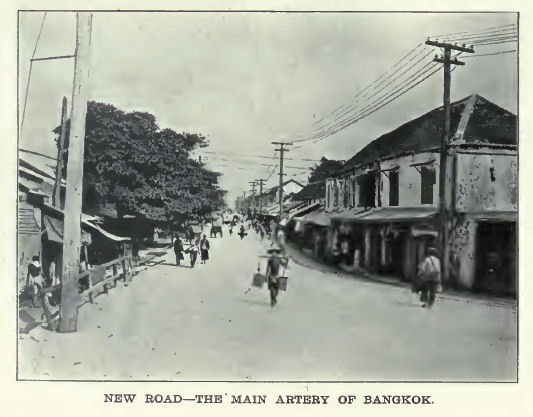
Abb.: Thanon Charoen Krung - Thai:
ถนนเจริญกรุง
[Bildquelle: Twentieth century impressions of Siam : its history, people,
commerce, industries, and resources / ed. in chief: Arnold Wright. -- London
[etc.] : Lloyds, 1908. -- S. 239]
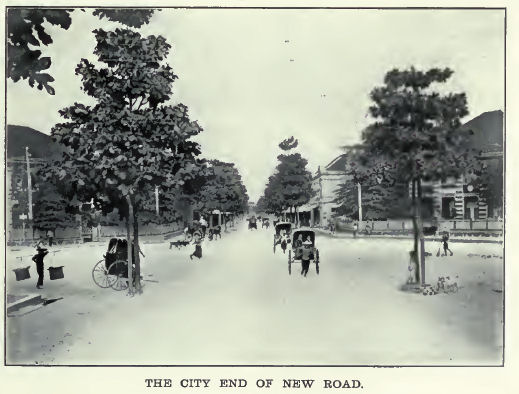
Abb.: Thanon Charoen Krung - Thai:
ถนนเจริญกรุง
[Bildquelle: Twentieth century impressions of Siam : its history, people,
commerce, industries, and resources / ed. in chief: Arnold Wright. -- London
[etc.] : Lloyds, 1908. -- S. 245]
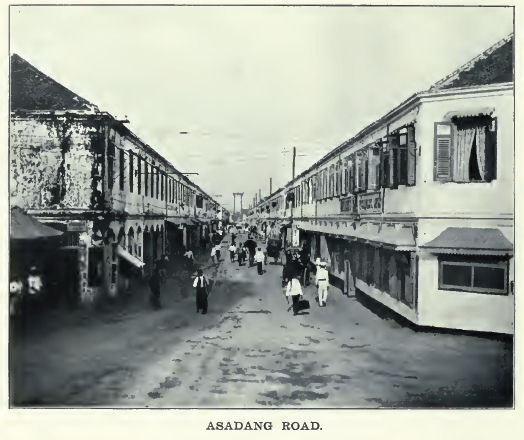
Abb.: Asadang Road - ถนนอัษฎางค์
[Bildquelle: Twentieth century impressions of Siam : its history, people,
commerce, industries, and resources / ed. in chief: Arnold Wright. -- London
[etc.] : Lloyds, 1908. -- S. 240]

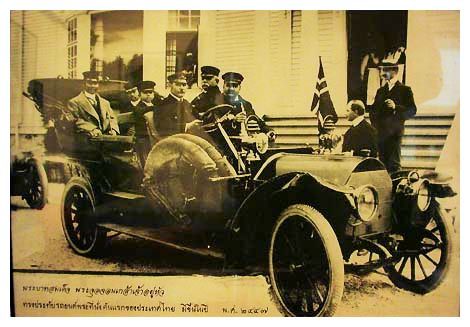
Abb.: Mercedes Simplex 28HP von Rama V., 1908
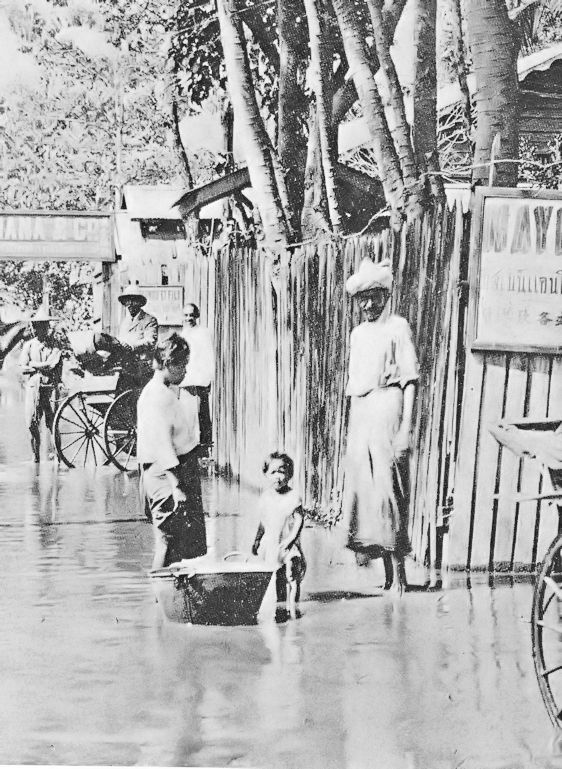
Abb.: Überschwemmung in Bangkok
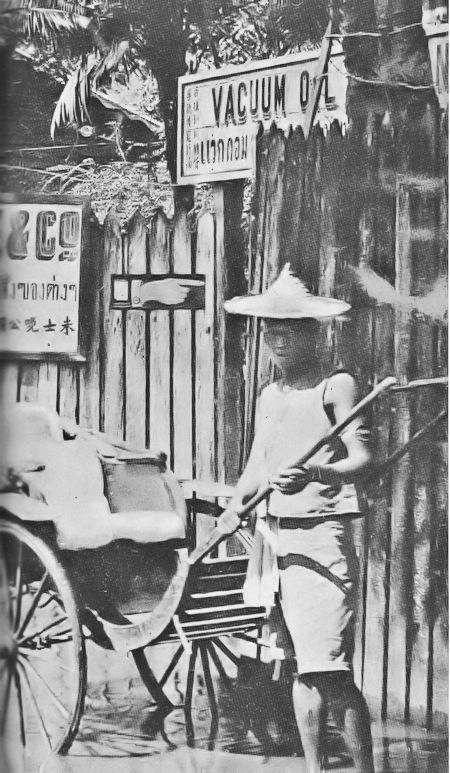
Abb.: Überschwemmung in Bangkok
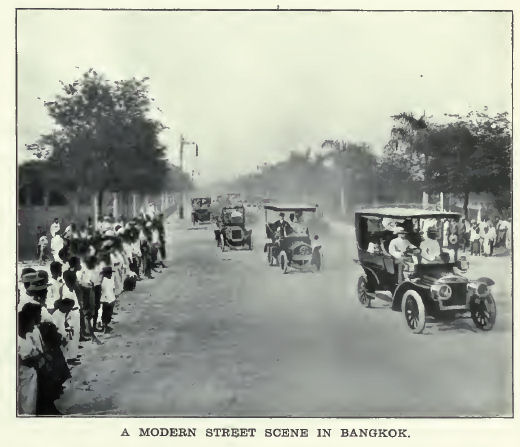
Abb.: Autoverkehr, Bangkok
[Bildquelle: Twentieth century impressions of Siam : its history, people,
commerce, industries, and resources / ed. in chief: Arnold Wright. -- London
[etc.] : Lloyds, 1908. -- S. 241]
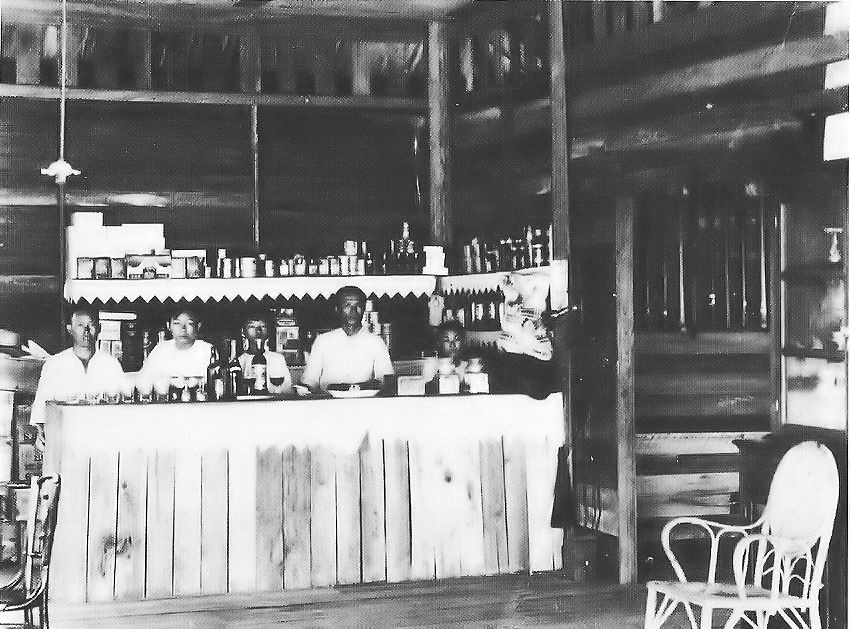
Abb.: Bar
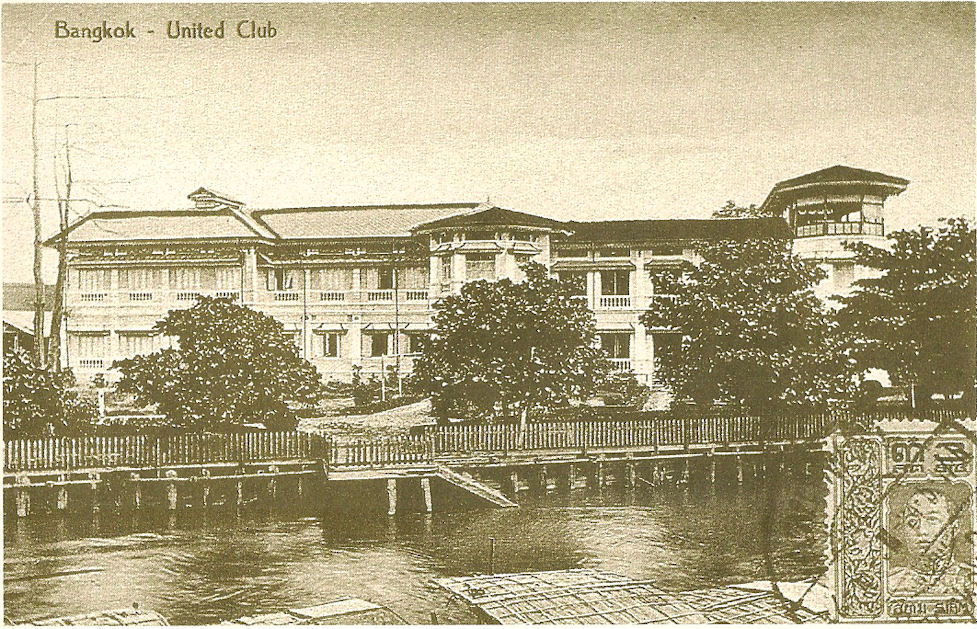
Abb.: Bangkok um 1900: United Club, der Treffpunkt der Hautevolee, Postkarte,
189x
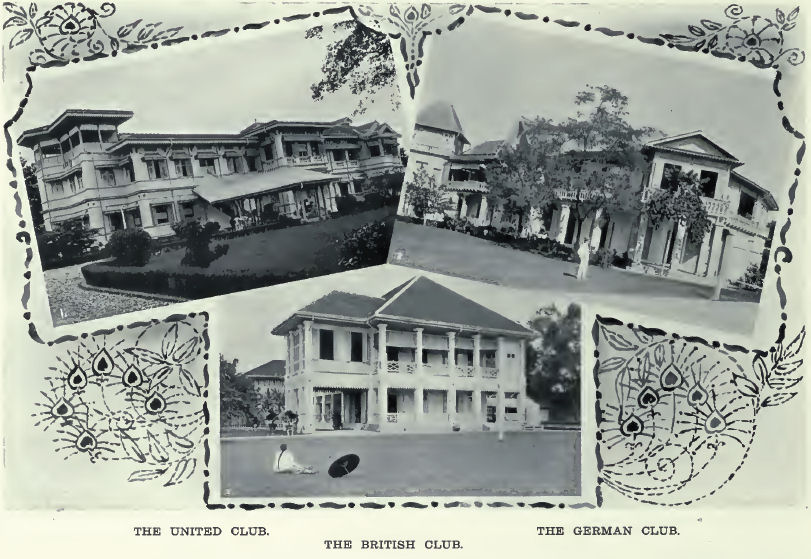
Abb.: Clubs in Bangkok: United Club, British Club, Deutscher Klub
[Bildquelle: Twentieth century impressions of Siam : its history, people,
commerce, industries, and resources / ed. in chief: Arnold Wright. -- London
[etc.] : Lloyds, 1908. -- S. 252]
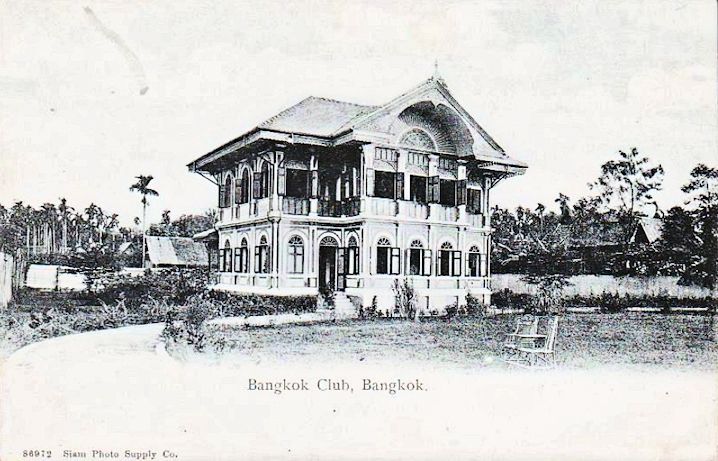
Abb.: Bangkok Club, 1900
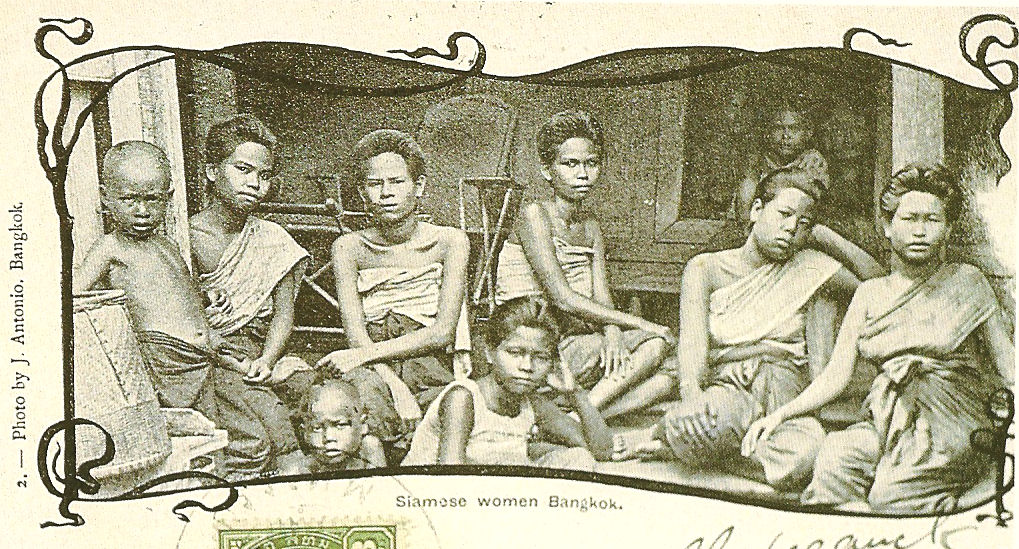
Abb.: Bangkok um 1900: Frauen mit Kindern, Postkarte, vor 1906
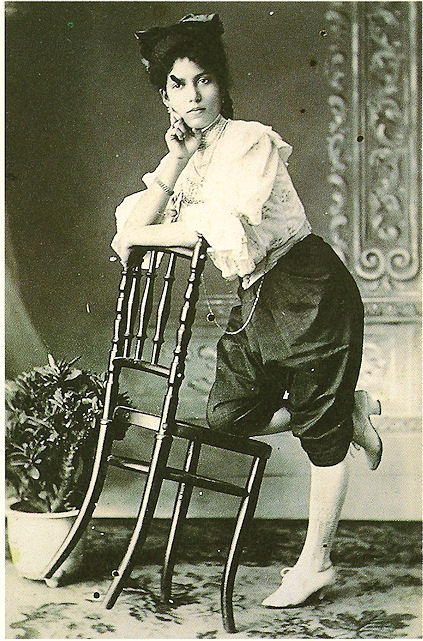
Abb.: Bangkok um 1900: Frau der Oberschicht, Postkarte, um 1905
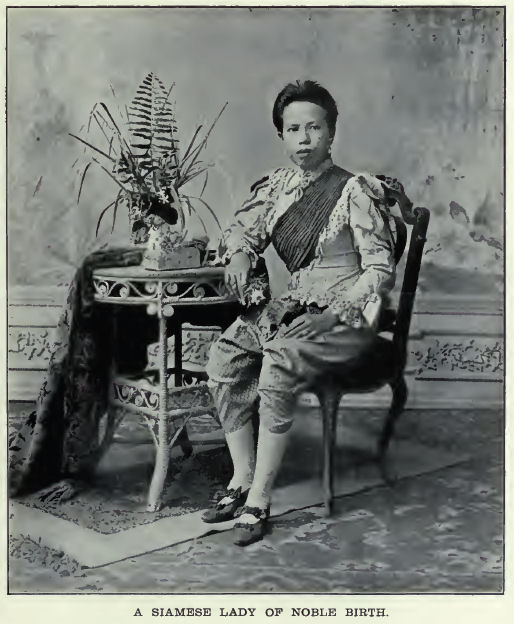
Abb.: Adlige Dame
[Bildquelle: Twentieth century impressions of Siam : its history, people,
commerce, industries, and resources / ed. in chief: Arnold Wright. -- London
[etc.] : Lloyds, 1908. -- S. 247]
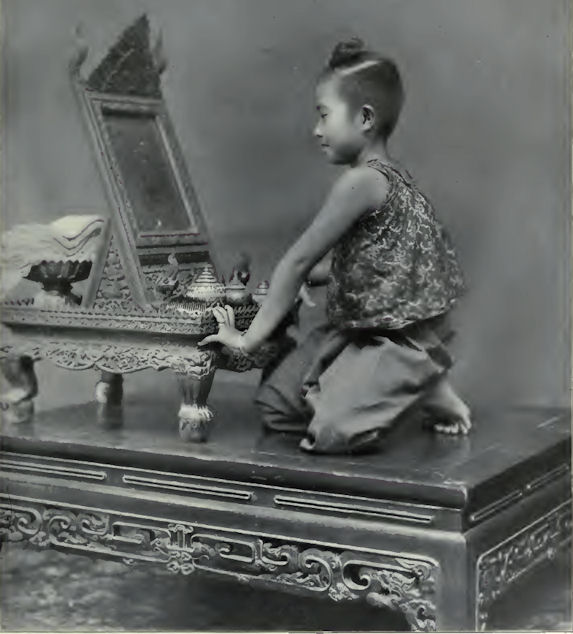
Abb.: Adeliges Mädchen bei der Toilette
[Bildquelle:
Twentieth century impressions of Siam : its history, people, commerce,
industries, and resources / ed. in chief: Arnold Wright. -- London [etc.] :
Lloyds, 1908. -- S. 69]
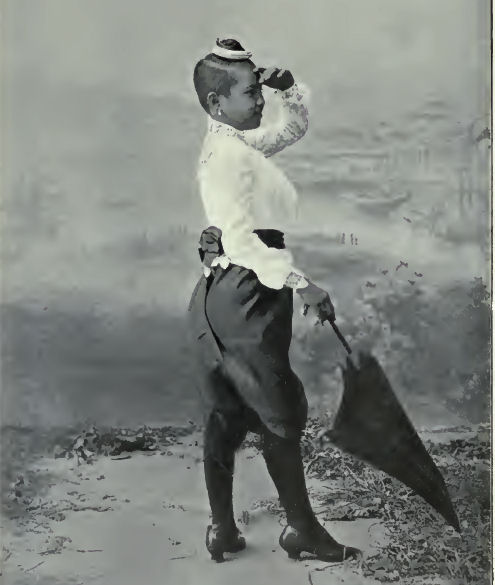
Abb.: Adliges Mädchen
[Bildquelle: Twentieth century impressions of Siam : its history, people,
commerce, industries, and resources / ed. in chief: Arnold Wright. -- London
[etc.] : Lloyds, 1908. -- S. 249]
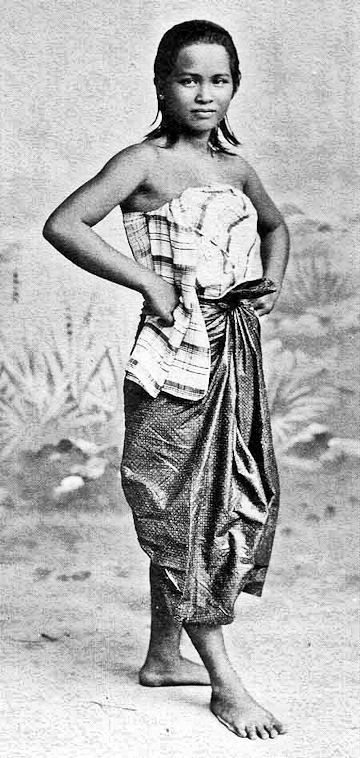
Abb.: Mädchen, 1900
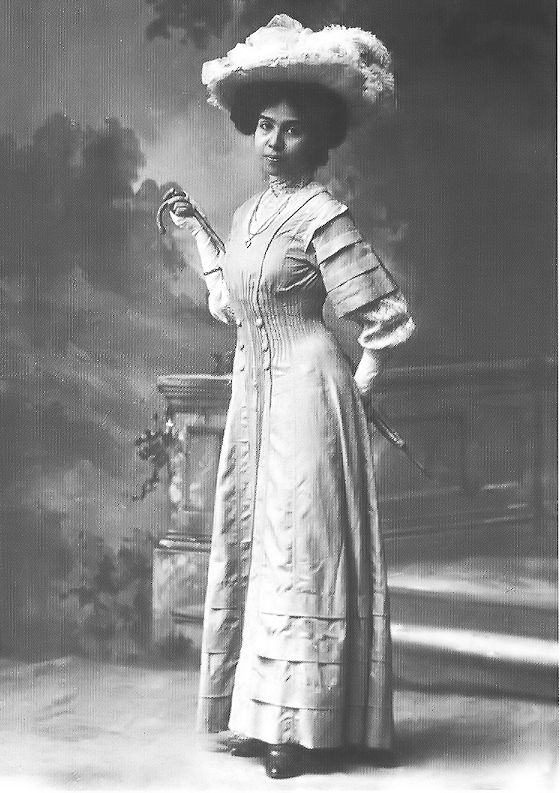
Abb.: Europäischer Chic im tropenheißen Bangkok
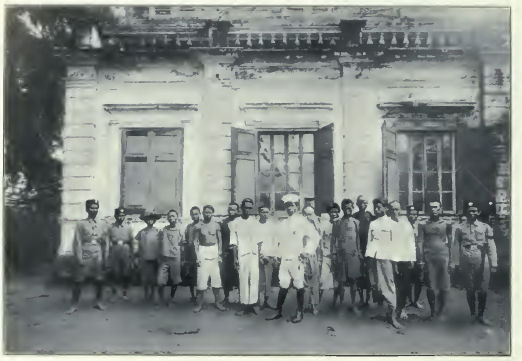
Abb.: Kriminelle mit Bewachung
[Bildquelle: Twentieth century impressions of Siam : its history, people,
commerce, industries, and resources / ed. in chief: Arnold Wright. -- London
[etc.] : Lloyds, 1908. -- S. 108]
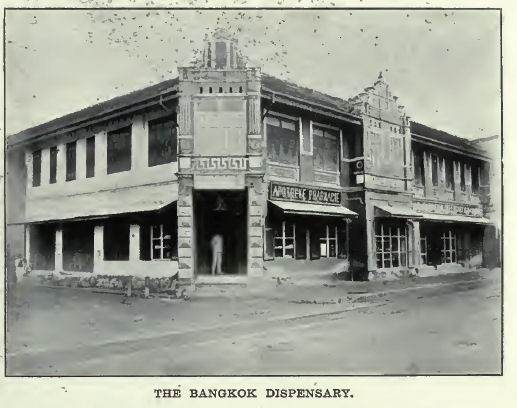
Abb.: Apotheke mit deutschem Besitzer
[Bildquelle: Twentieth century impressions of Siam : its history, people,
commerce, industries, and resources / ed. in chief: Arnold Wright. -- London
[etc.] : Lloyds, 1908. -- S. 275]
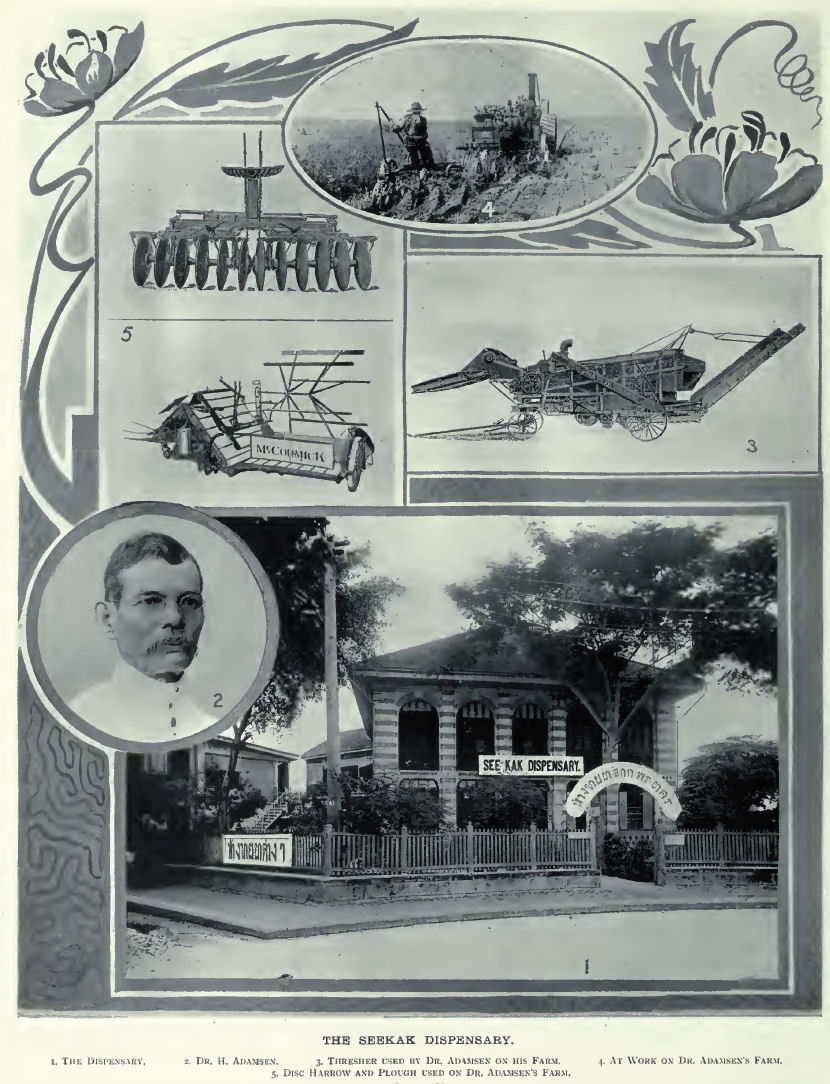
Abb.: Der Apotheker Dr. H. Adamsen verwendete auf seinen Feldern ab 1904
modernste amerikanische Landmaschinen
[Bildquelle: Twentieth century impressions of Siam : its history, people,
commerce, industries, and resources / ed. in chief: Arnold Wright. -- London
[etc.] : Lloyds, 1908. -- S. 276]
"SEEKAK DISPENSARY.
Dr. H. Adamsen, the proprietor of the Seekak Dispensary, can look back with pride upon his record in the medical world of Siam, the land of his birth. He left home at the age of twelve and joined the Marine Service, returning to Siam at the age of eighteen, in time to leave for America with Mr. J. H. Chandler, a missionary from Bangkok, to whom Dr. Adamsen is indebted for much help in the early stages of his medical career. He received a preparatory education at the Suffield Institution, Conn., U.S.A. ; his collegiate course was passed at Bucknell University, Louisburg, Penn., and his medical course at Jefferson Medical College, Philadelphia, where he graduated in 1888, returning again three years later, married, to Siam. On his arrival in Bangkok he started a private practice, and at the same time opened the Seekak Dispensary.
On the outbreak of plague in 1894, when quarantine was declared against Hongkong, Dr. Adamsen was appointed Quarantine Officer, being the first occupier of such a post in Siam. He held the office for four years, and built the Quarantine Station, which was originally at Koh Pai but has since been removed to Koh Phra.
He was deputed by H.M. the Queen to open a school for tuition in nursing and midwifery—a school which during its eight years' existence was the means of sending out no less than thirty women qualified in both branches. Up to the present time Dr. Adamsen retains the position, to which he was appointed in 1894, of Lecturer on Obstetrics and Practice of Medicine at the Royal Medical College. In 1904 he was sent by the Siamese Government to Manilla on a mission for the investigation of the method of making rinderpest and anthrax serum. On his return he started the Government Experimental Serum Laboratory, and the same year was successful, with the co-operation of Dr. Braddock, in producing vaccine. The laboratory has since been removed, and now is stationed at Prapatom. While experiments were being carried on, and after the successful production of lymph, the Government medical officers within two years vaccinated, free of charge, something like 350,000 people, while upwards of 7,000 cattle were inoculated against rinderpest.
Dr. Adamsen became the medical missionary of the Baptist Union in 1896, and subsequently was appointed Inspector of the Hospitals of the Kingdom and Health Officer of the Interior,
the Government furnishing 25,000 ticals a year for the purpose of distributing medicines among the residents in the various towns and villages. The people of the most northerly tribes, who were up till that time quite unacquainted with European medicine, received quinine and other drugs and derived considerable benefit from the experienced medical treatment provided.
The Seekak Dispensary was the fourth dispensary established in the kingdom and the first within the city wall. In this department of his business Dr. Adamsen is now assisted by Dr. W. B. Toy.
While in America Dr. Adamsen was in the habit of spending his vacations in the country, and became familiar with farming in all its branches. Always retaining in mind the possibility of introducing farming machinery into Siam, he purchased, in 1904, a farm of 450 acres in the Klong Rangsit district, and with imported American and British machinery—comprising threshing and reaping machines, disc ploughs and harrows—he succeeded, in the end, in proving to the natives that machinery can be used as successfully in Siam as in North and South Carolina. Dr. Adamsen's grain was the first reaped by machinery in Siam. Since, however, he has achieved success, companies and syndicates have been formed to cultivate large areas of land in similar manner."
[Bildquelle: Twentieth century impressions of Siam : its history, people, commerce, industries, and resources / ed. in chief: Arnold Wright. -- London [etc.] : Lloyds, 1908. -- S. 278]
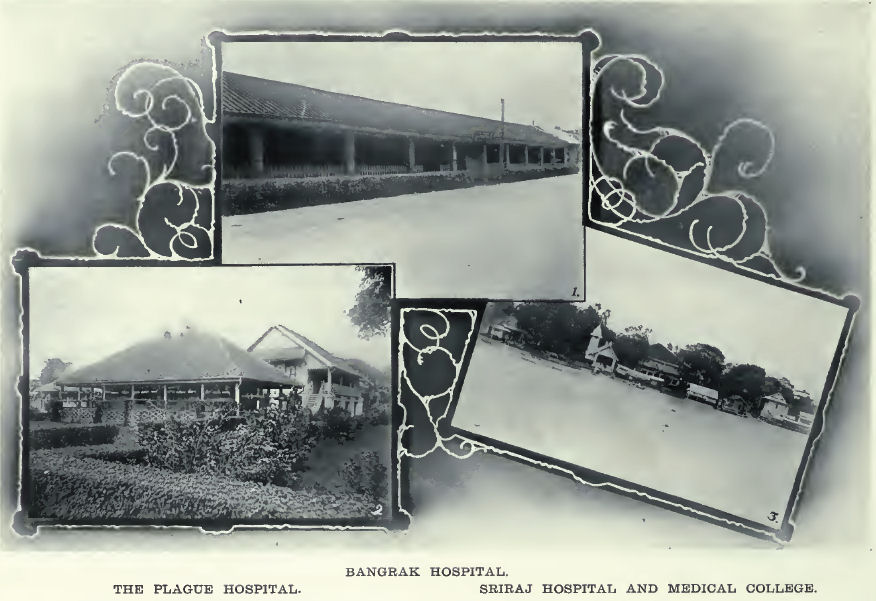
Abb.: Krankenhäuser: Bangrak (บางรัก)
Hospital, Pestkrankenhaus, Sriraj (ร์ศิริราช)
Hospital and Medical College
[Bildquelle: Twentieth century impressions of Siam : its history, people,
commerce, industries, and resources / ed. in chief: Arnold Wright. -- London
[etc.] : Lloyds, 1908. -- S. 130]
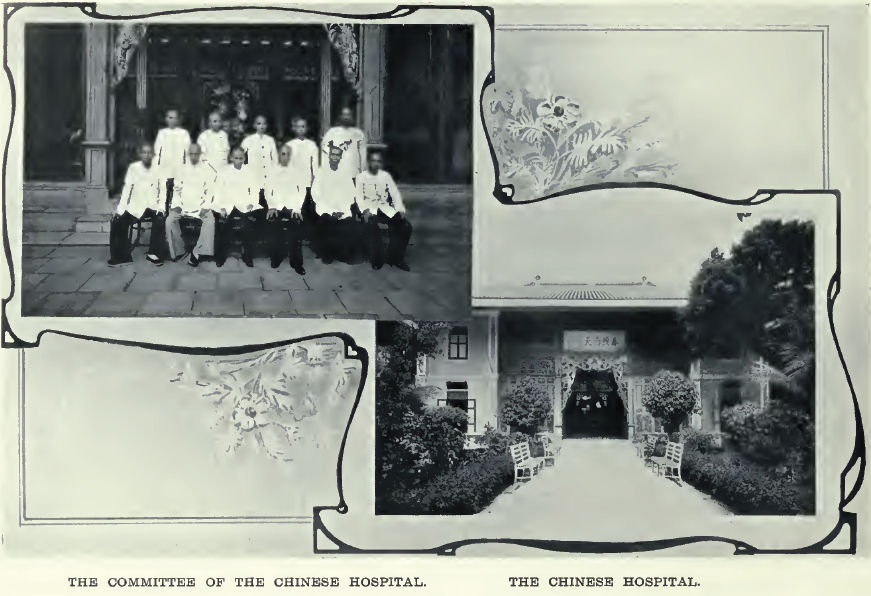
Abb.: Chinesisches Krankenhaus
[Bildquelle: Twentieth century impressions of Siam : its history, people,
commerce, industries, and resources / ed. in chief: Arnold Wright. -- London
[etc.] : Lloyds, 1908. -- S. 134]
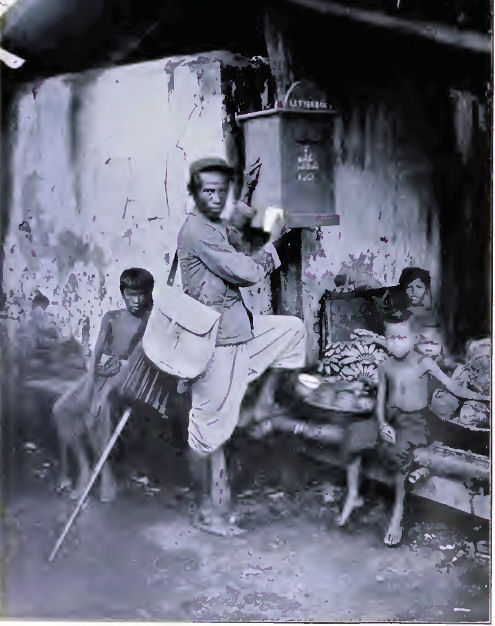
Abb.: Briefkasten
[Bildquelle: Twentieth century impressions of Siam : its history, people,
commerce, industries, and resources / ed. in chief: Arnold Wright. -- London
[etc.] : Lloyds, 1908. -- S. 205]
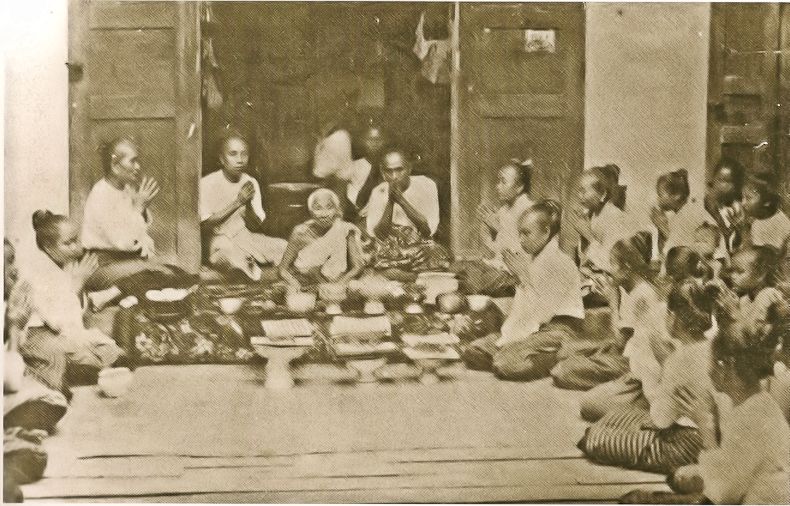
Abb.: Ehrung der Alten (พิธีรดน้ำดำหัว) an Songkran (สงกรานต์)
13/15. April, Chiang Mai (เชียงใหม่)
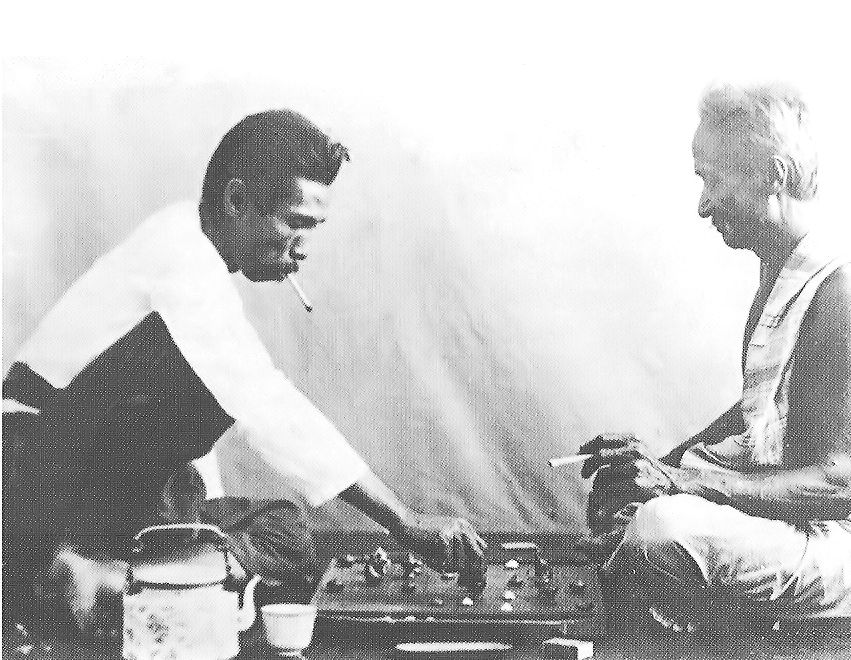
Abb.: Makruk-Spieler (Thai-Schach) (หมากรุก)
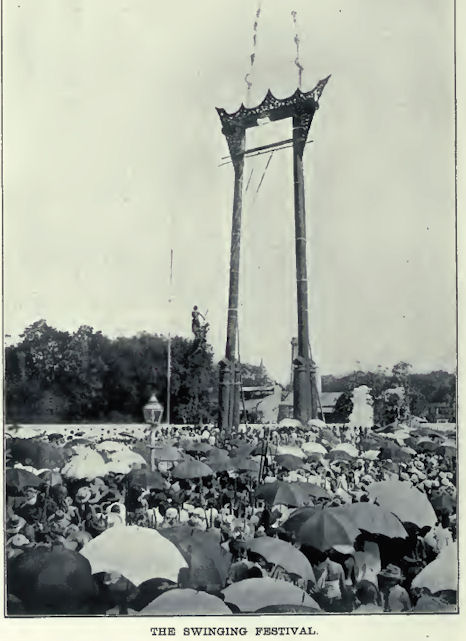
Abb.: Schaukelfest, Große Schaukel (เสาชิงช้า
), bei Wat Suthat - วัดสุทัศน
[Bildquelle: Twentieth century impressions of Siam : its history, people,
commerce, industries, and resources / ed. in chief: Arnold Wright. -- London
[etc.] : Lloyds, 1908. -- S. 221]
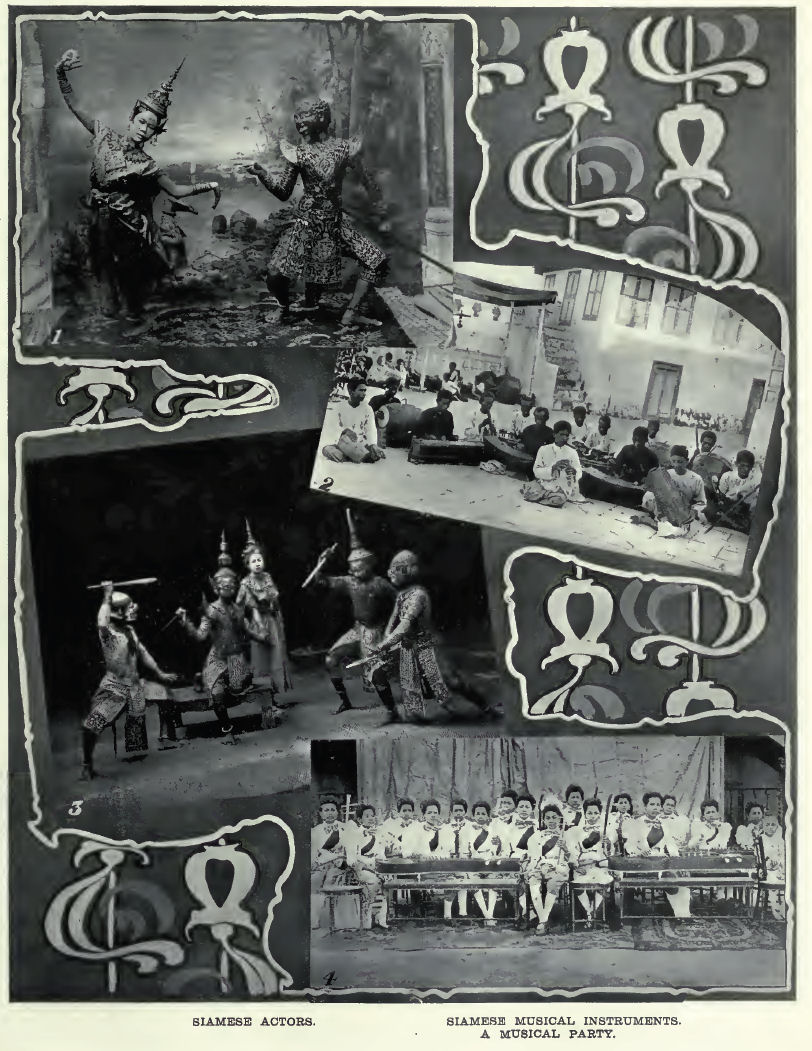
Abb.: Theater und Konzert
[Bildquelle: Twentieth century impressions of Siam : its history, people,
commerce, industries, and resources / ed. in chief: Arnold Wright. -- London
[etc.] : Lloyds, 1908. -- S. 221]
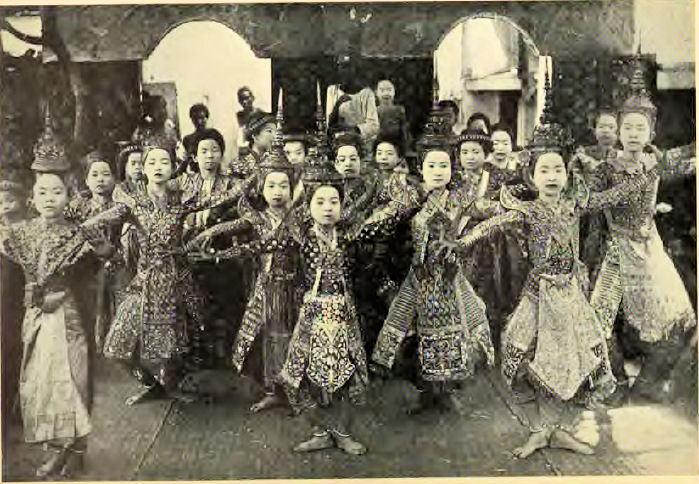
Abb.: Tänzerinnen
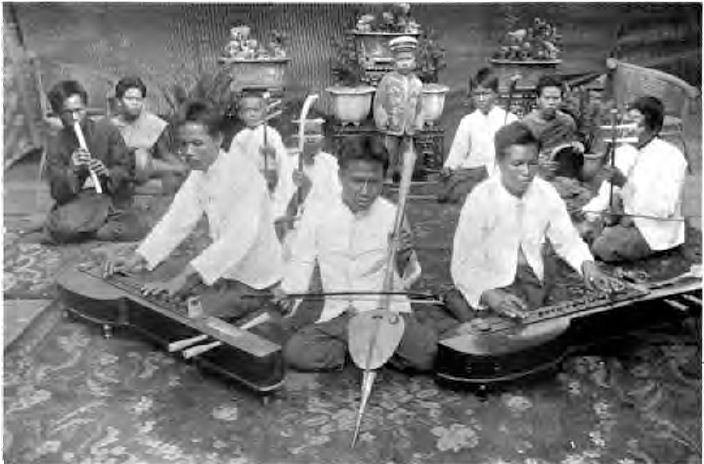
Abb.: Siamesisches Orchester

Abb.: Tageszeitung Chino-Siamese Daily News (in Chinesisch und Thai)
[Bildquelle: Twentieth century impressions of Siam : its history, people,
commerce, industries, and resources / ed. in chief: Arnold Wright. -- London
[etc.] : Lloyds, 1908. -- S. 295]
"THE CHINO-SIAMESE DAILY NEWS. The most important newspaper enterprise in Bangkok, apart from the English daily papers, is probably the Chino-Siamese Daily News. This journal, as its name indicates, is published in both the Chinese and Siamese languages. It consists of twelve pages, eight printed in Chinese and four in Siamese, and is conducted with considerable vigour.
Its policy, indeed, may be described as candid and highly independent, and it is, perhaps, hardly surprising, therefore, that it has had a somewhat troubled career. Its large circulation, both in Siam and abroad, however, may be taken as an indication that it has gained the public favour. It numbers many friends among the reform party in China, but is often found at variance with those in favour of a continuance of the old regime. The paper's immediate predecessor, the Menam Kong Poh, was forced to discontinue publication because of the strong forces arrayed against it. The property was purchased by Mr. Seow Hood Seng, who upon the old foundation built up the Chino-Siamese Daily News; and, while the policy of the new journal is very similar to that of the old, the paper, under his skilful management, has secured for itself a position from which it cannot easily be shaken.
Mr. Seow Hood Seng, in addition to his responsibility as proprietor and manager, also carries out the duties of chief editor of the paper. He is a native of Bangkok and a distinguished Chinese scholar, so that he is not only well qualified to write on Siamese affairs, but is also able to bring expert knowledge to bear upon those subjects which intimately concern the welfare of the inhabitants of the Middle Kingdom. He is the son of an old resident of Malacca who built up a considerable business in Bangkok, and Mr. Seow Hood himself, in spite of his necessarily onerous duties connected with the successful conduct of a daily newspaper, still finds time to take an interest in a variety of commercial undertakings. He is the managing attorney for the firm of Tai Guan, Bangkok's largest Chinese firm of wine and spirit merchants and importers, and is associated, directly or indirectly, with several other large enterprises. He also takes a prominent part in social and charitable work, and has just been successful in raising a large public subscription for the establishment of a school for Chinese boys. His brother, Mr. Keng Leon, a good English and Siamese scholar, who would otherwise have been of great assistance in the carrying on of the newspaper, has recently been called to take up a responsible appointment in the Government service.
Mr. Chan King Wah, the Chinese editor, is also a man of strong character. A native of Canton, he came to Bangkok some years ago and founded the Menam Kong Poh, to which reference has already been made. He is an accomplished Chinese journalist, and now in the Chino-Siamese Daily News finds that scope for the expression of his views upon Chinese public affairs which was previously denied him."
[Quelle: Twentieth century impressions of Siam : its history, people, commerce, industries, and resources / ed. in chief: Arnold Wright. -- London [etc.] : Lloyds, 1908. -- S. 295ff.]

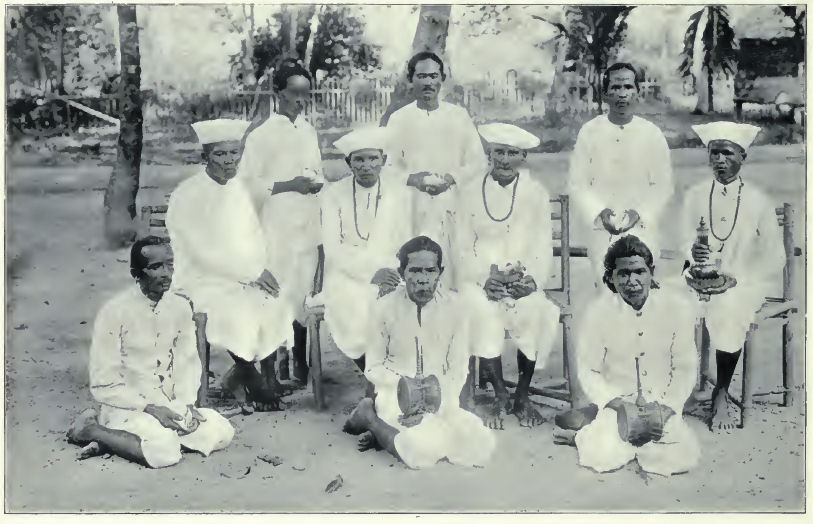
Abb.: Hofbrahmanen
[Quelle:
Twentieth century impressions of Siam : its history, people, commerce,
industries, and resources / ed. in chief: Arnold Wright. -- London [etc.] :
Lloyds, 1908. -- S. 42]
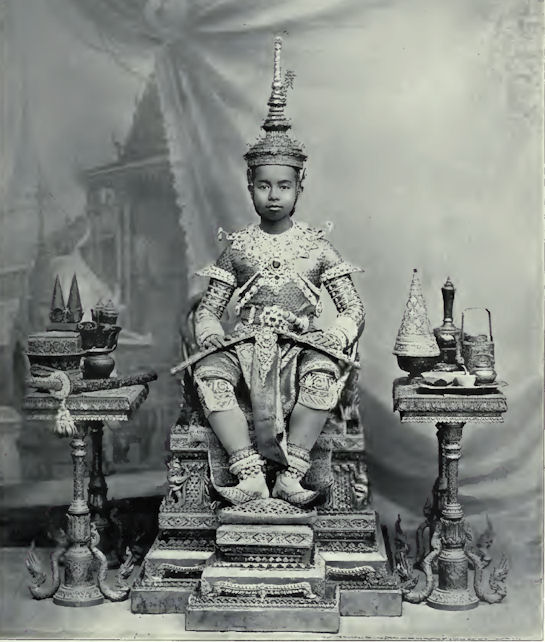
Abb.: Mitglied des Königshauses, vorbereitet zur Haarschneidezeremonie
[Bildquelle:
Twentieth century impressions of Siam : its history, people, commerce,
industries, and resources / ed. in chief: Arnold Wright. -- London [etc.] :
Lloyds, 1908. -- S. 83]
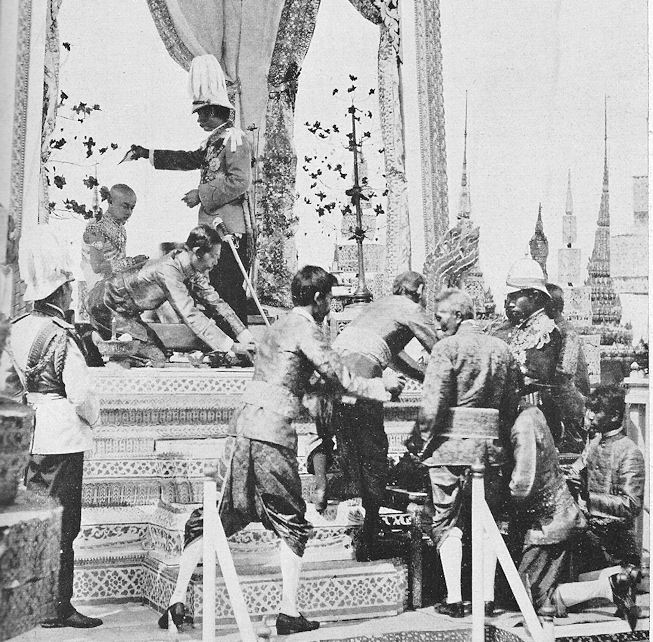
Abb.: Haarschneidezeremonie am Königshof
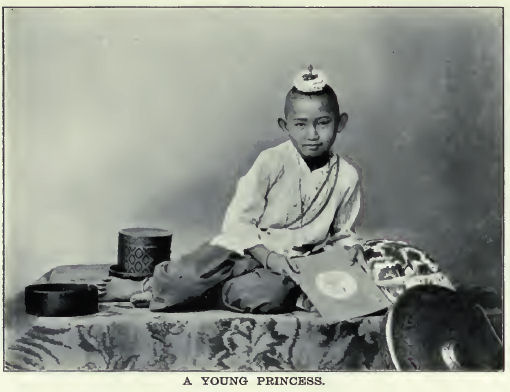
Abb.: Prinzessin
[Bildquelle: Twentieth century impressions of Siam : its history, people,
commerce, industries, and resources / ed. in chief: Arnold Wright. -- London
[etc.] : Lloyds, 1908. -- S. 249]
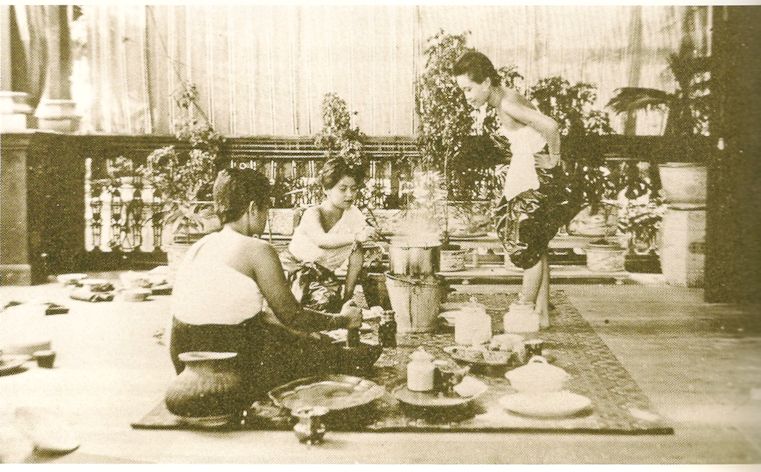
Abb.: Kochen im Palast Ramas V.
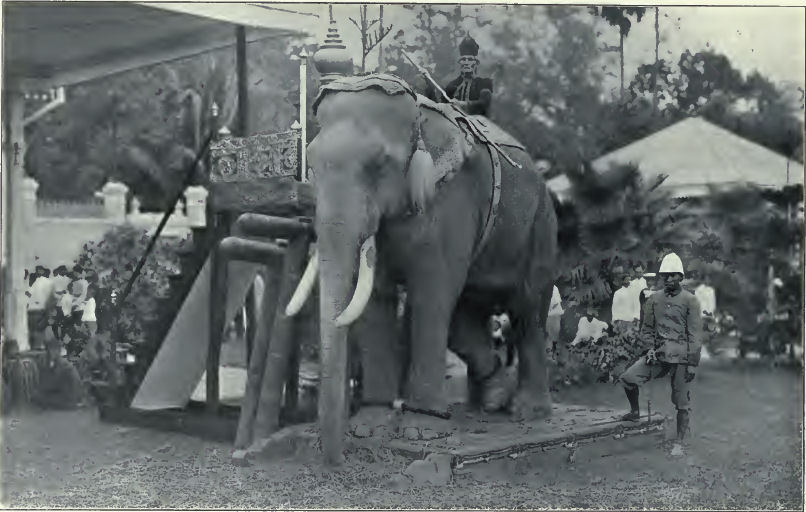
Abb.: Königlicher Weißer Elefant
[Bildquelle:
Twentieth century impressions of Siam : its history, people, commerce,
industries, and resources / ed. in chief: Arnold Wright. -- London [etc.] :
Lloyds, 1908. -- S. 62]
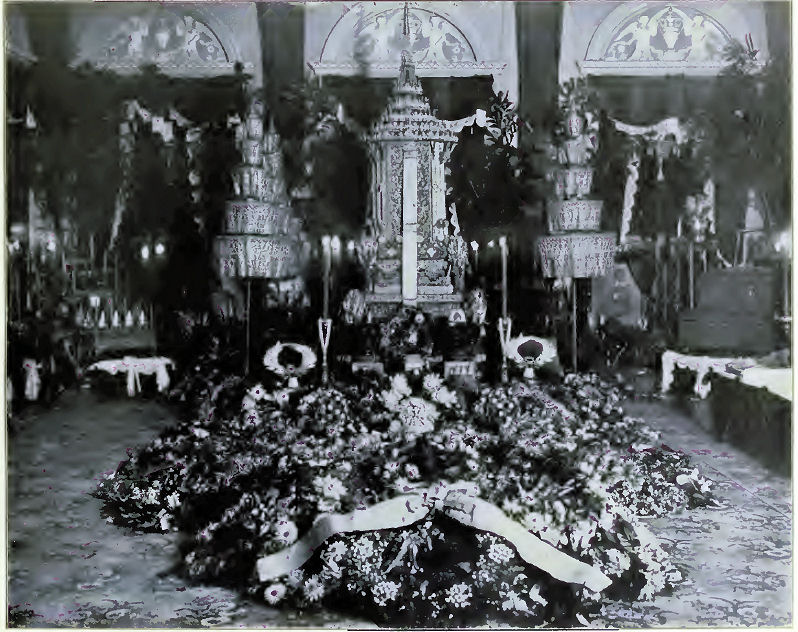
Abb.: Aufbahrung
[Bildquelle:
Twentieth century impressions of Siam : its history, people, commerce,
industries, and resources / ed. in chief: Arnold Wright. -- London [etc.] :
Lloyds, 1908. -- S. 65]
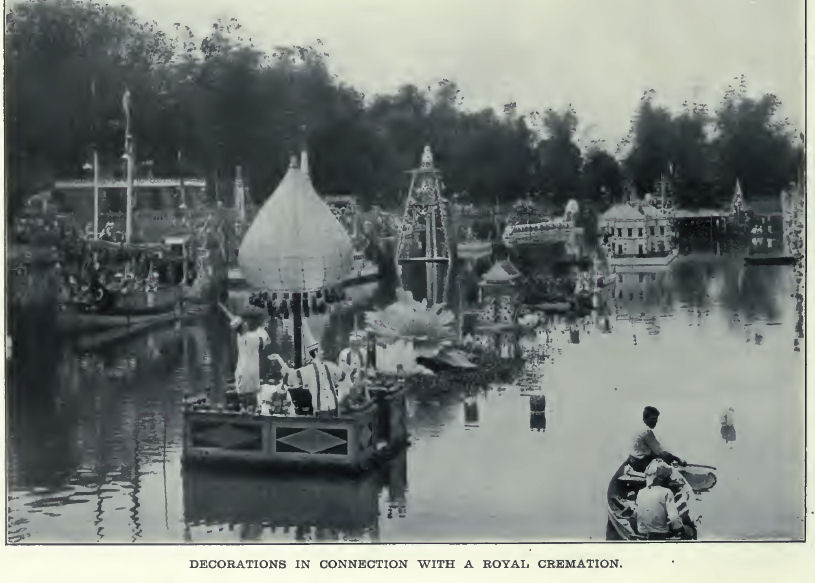
Abb.: Zubehör zu einer königlichen Einäscherung
[Bildquelle: Twentieth century impressions of Siam : its history, people,
commerce, industries, and resources / ed. in chief: Arnold Wright. -- London
[etc.] : Lloyds, 1908. -- S. 224]
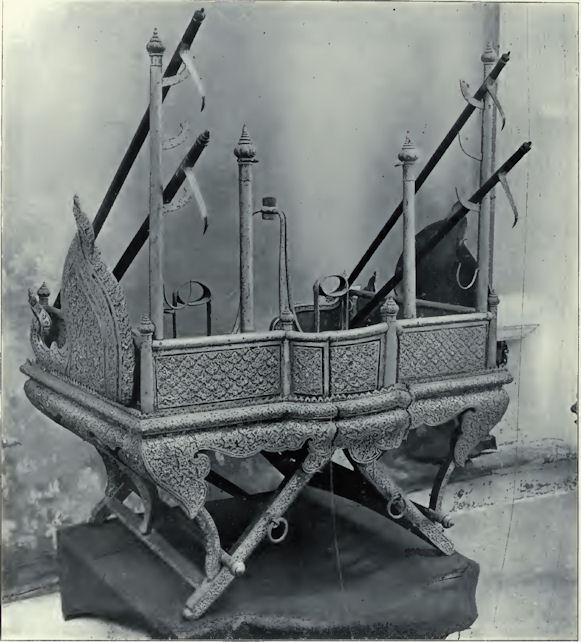
Abb.: Howdah des Königs
[Bildquelle:
Twentieth century impressions of Siam : its history, people, commerce,
industries, and resources / ed. in chief: Arnold Wright. -- London [etc.] :
Lloyds, 1908. -- S. 66]
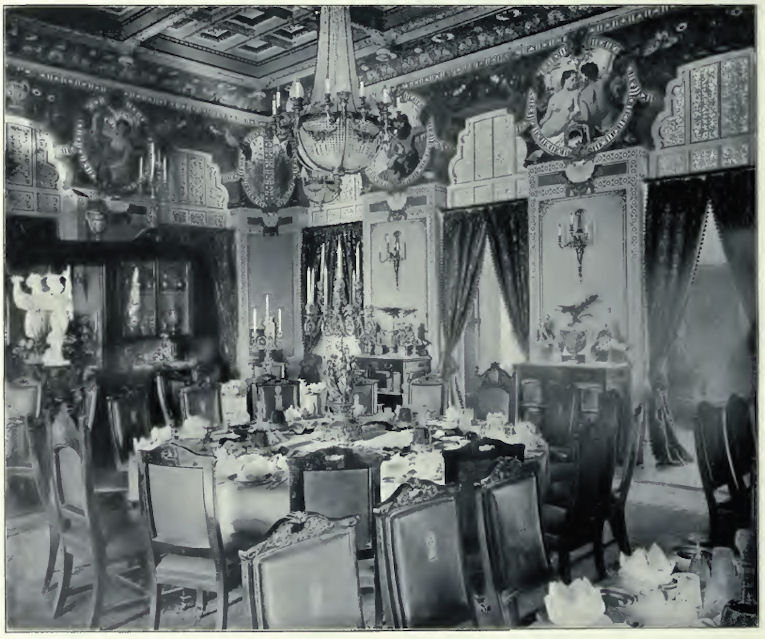
Abb.: Speiseraum im Dusit-Palast (พระราชวังดุสิต),
Bangkok
[Bildquelle: Twentieth century impressions of Siam : its history, people,
commerce, industries, and resources / ed. in chief: Arnold Wright. -- London
[etc.] : Lloyds, 1908. -- S. 90]
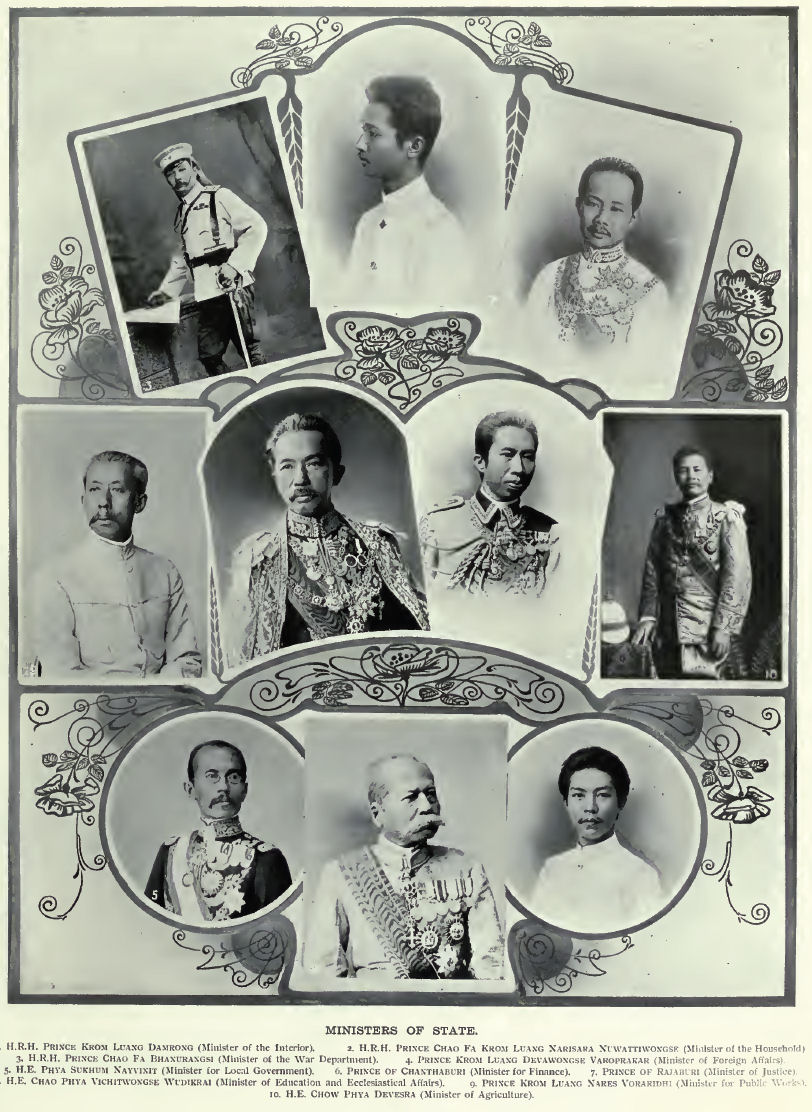
Abb.: Minister Siams: 1. H.R.H. Prince Krom Luang Damrong (Minister of the
Interior). 2. H.R.H. Prince Chao Fa Krom Luang Narisara Nuwattiwongse. (Minister
of the Household). 3. H.R.H. Prince Chao Fa Bhanurangsi (Minister of the War
Department). 4. Prince Krom Luang Devawongse Varoprakar (Minister of Foreign
Affairs). 5. H.E. Phya Sukhum Nayvinit (Minister for Local Government). 6.
Prince of Chanthaburi (Minister for Finance). 7. Prince of Rajaburi (Minister of
Justice). 8. H.E. Chao Phya Vichitwongse Wudikrai (Minister of Education and
Ecclesiastical Affairs). 9. Prince Krom Luang Nares Voraridhi (Minister for
Public Works). 10. H.E. Chow Phya Devesra (Minister of Agriculture).
[Bildquelle: Twentieth century impressions of Siam : its history, people,
commerce, industries, and resources / ed. in chief: Arnold Wright. -- London
[etc.] : Lloyds, 1908. -- S. 93]
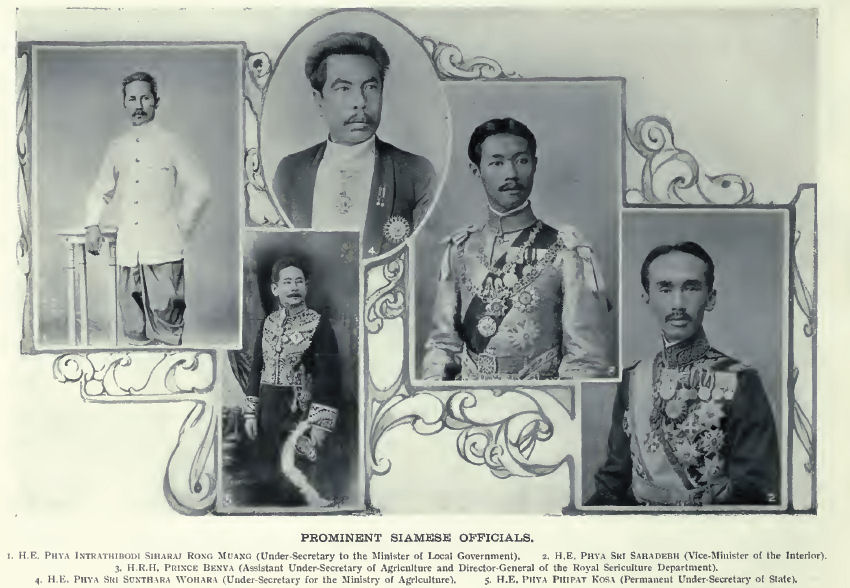
Abb.: Wichtige Beamte Siams: 1. H.E. Phya Intrathibodi
Siharaj Rong Muang (Under-Secretary to the Minister of Local Government). 2.
H.E. Phya Sri Sahadebh (Vice-Minister of the Interior). 3. H.R.H. Prince Benya
(Assistant Under-Secretary of Agriculture and Director-General of the Royal
Sericulture Department). 4. H.E. Phya Sri Sunthara Wohara (Under-Secretary for
the Ministry of Agriculture). 5. H.E. Phya Phipat Kosa (Permanent
Under-Secretary of State).
[Bildquelle: Twentieth century impressions of Siam : its history, people,
commerce, industries, and resources / ed. in chief: Arnold Wright. -- London
[etc.] : Lloyds, 1908. -- S. 92]
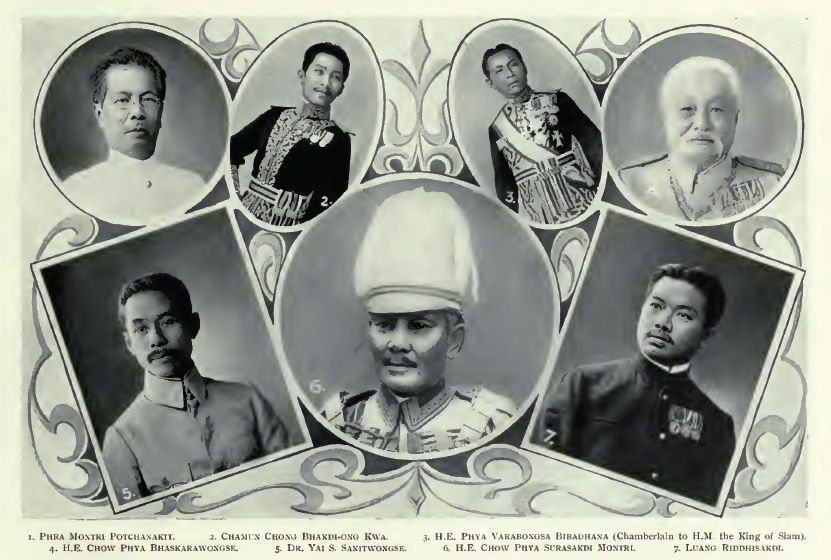
Abb.: Siamesische Hautevolee
[Bildquelle: Twentieth century impressions of Siam : its history, people,
commerce, industries, and resources / ed. in chief: Arnold Wright. -- London
[etc.] : Lloyds, 1908. -- S. 253]
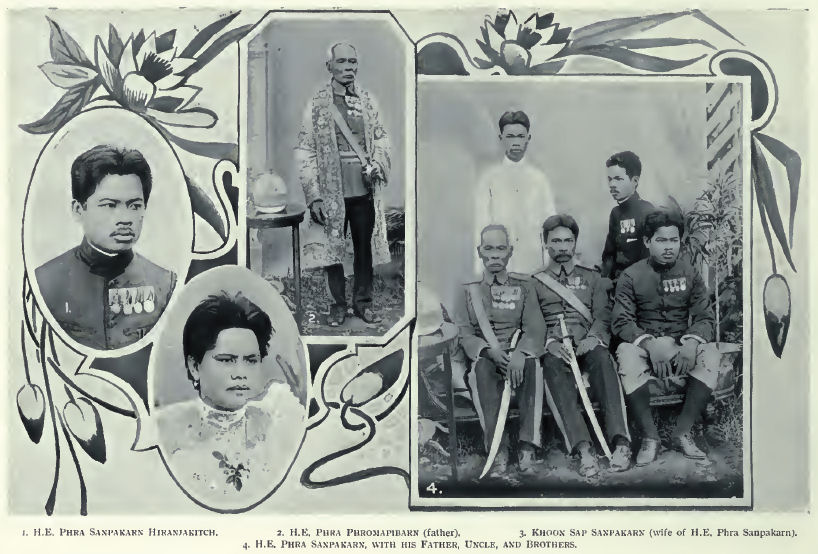
Abb.: Siamesische Hautevolee
[Bildquelle: Twentieth century impressions of Siam : its history, people,
commerce, industries, and resources / ed. in chief: Arnold Wright. -- London
[etc.] : Lloyds, 1908. -- S. 256]
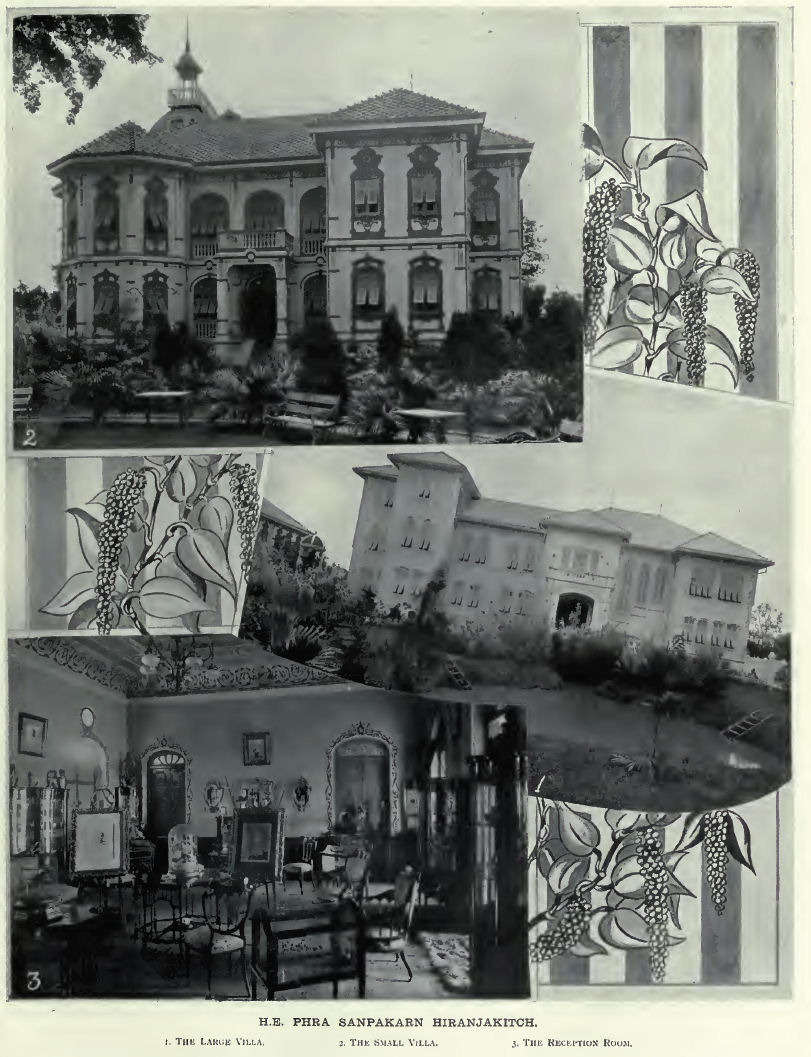
Abb.: Residenz von H. E. Phra Sanpakarn Hiranjakitch, Offizier der königlichen
Leibgarde
[Bildquelle: Twentieth century impressions of Siam : its history, people,
commerce, industries, and resources / ed. in chief: Arnold Wright. -- London
[etc.] : Lloyds, 1908. -- S. 255]
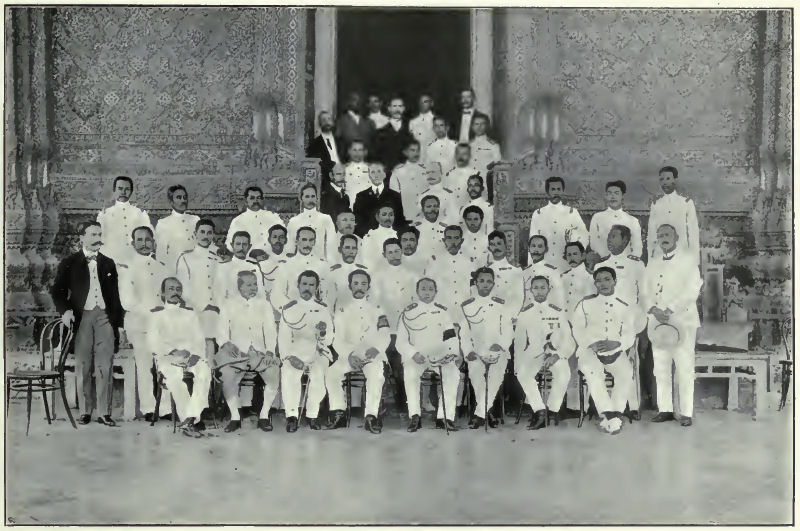
Abb.: Gruppe von Regierungsbeamten
[Bildquelle: Twentieth century impressions of Siam : its history, people,
commerce, industries, and resources / ed. in chief: Arnold Wright. -- London
[etc.] : Lloyds, 1908. -- S. 115]
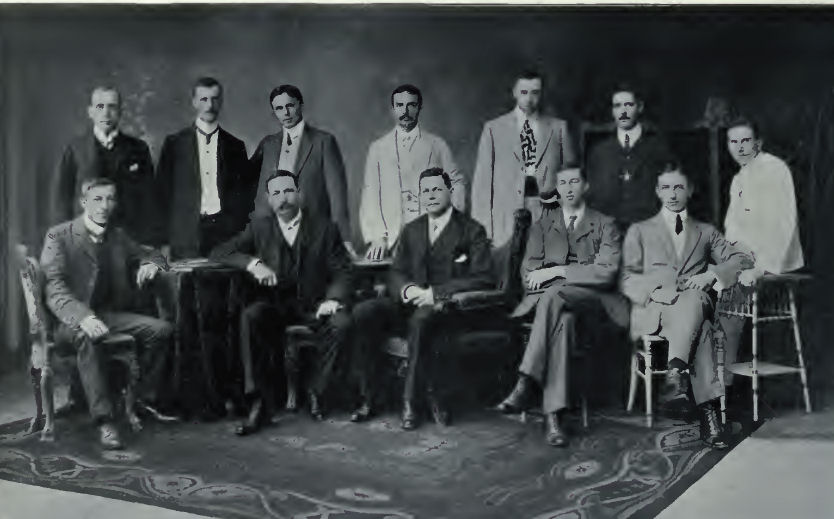
Abb.: Landvermesser
[Bildquelle: Twentieth century impressions of Siam : its history, people,
commerce, industries, and resources / ed. in chief: Arnold Wright. -- London
[etc.] : Lloyds, 1908. -- S. 124]
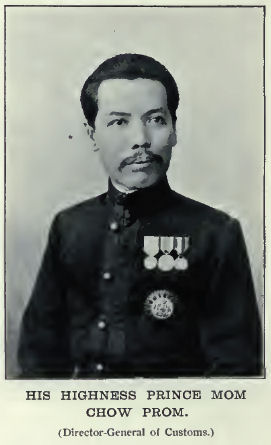
Abb.: H.H. Prince Mom Chow Prom, Generaldirektor des Zolls
[Bildquelle: Twentieth century impressions of Siam : its history, people,
commerce, industries, and resources / ed. in chief: Arnold Wright. -- London
[etc.] : Lloyds, 1908. -- S. 136]
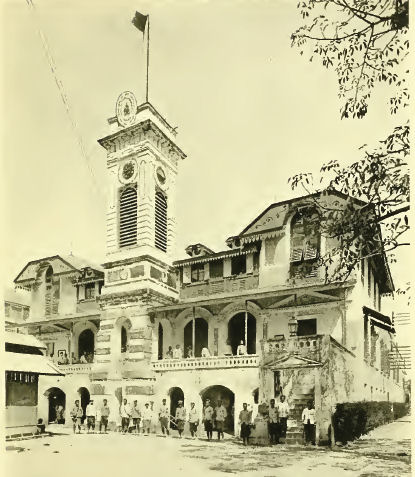
Abb.: Hauptpostamt, Bangkok
[Bildquelle:
The kingdom of Siam : Ministry of
Agriculture, Louisiana Purchase Exposition, St. Louis, U.S.A., 1904 ; Siamese
section / ed. by A. Cecil Carter. -- New York: Putnam’s Sons, 1904. -- Nach S.
234]
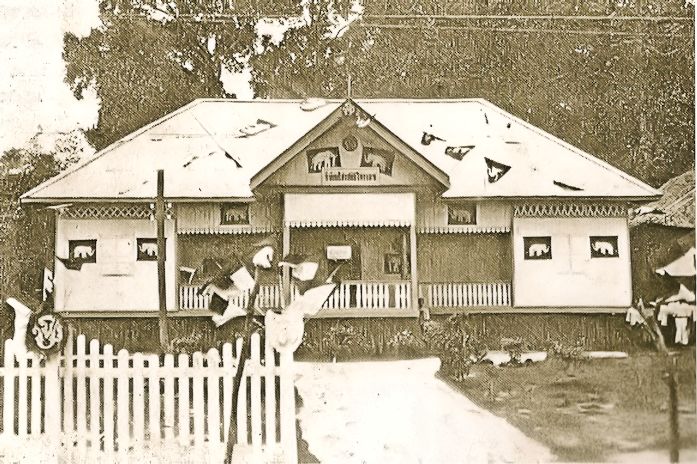
Abb.: Ein Post- und Telegrafenamt
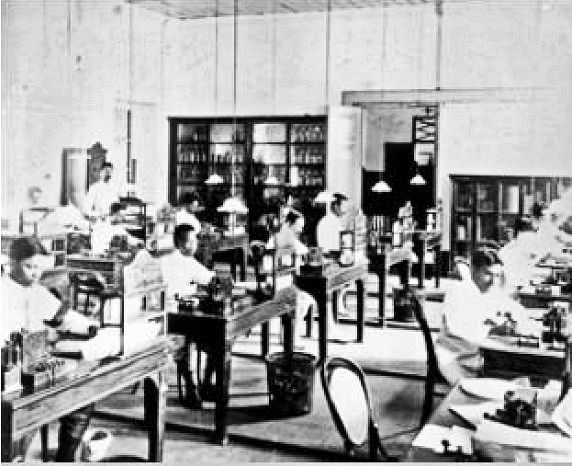
Abb.: Hauptpostamt Bangkok, 1900
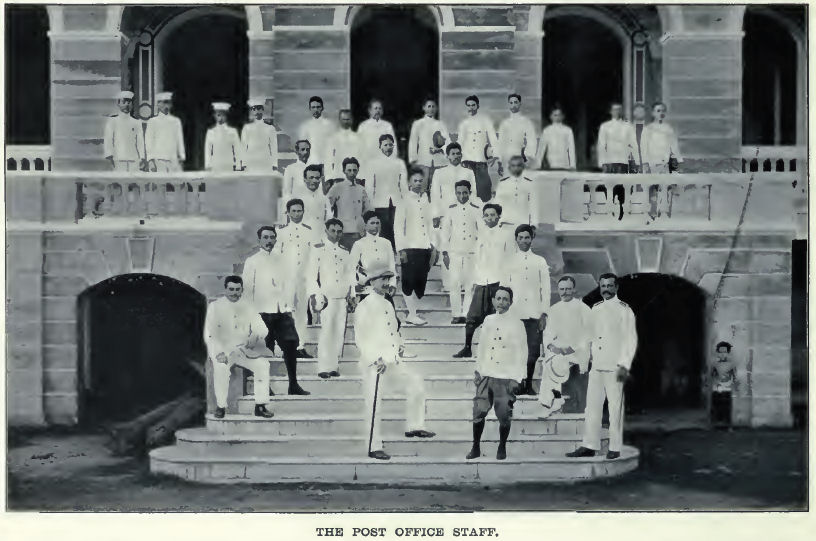
Abb.: Postbeamte
[Bildquelle: Twentieth century impressions of Siam : its history, people,
commerce, industries, and resources / ed. in chief: Arnold Wright. -- London
[etc.] : Lloyds, 1908. -- S. 206]
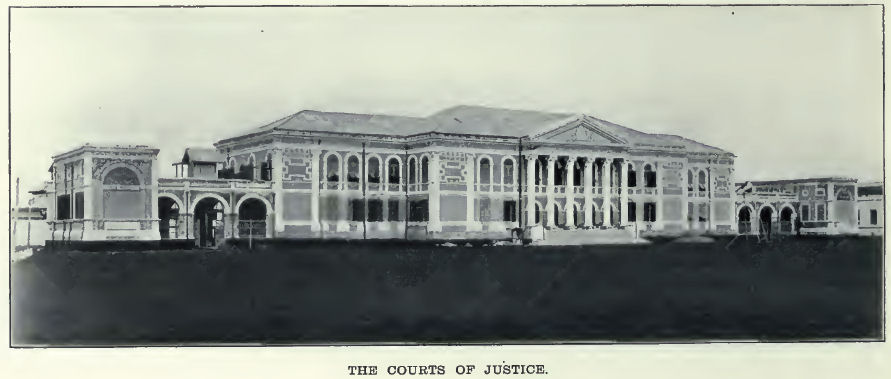
Abb.: Gerichtsgebäude, Bangkok
[Bildquelle:
Twentieth century impressions of Siam : its history, people, commerce,
industries, and resources / ed. in chief: Arnold Wright. -- London [etc.] :
Lloyds, 1908. -- S. 94]
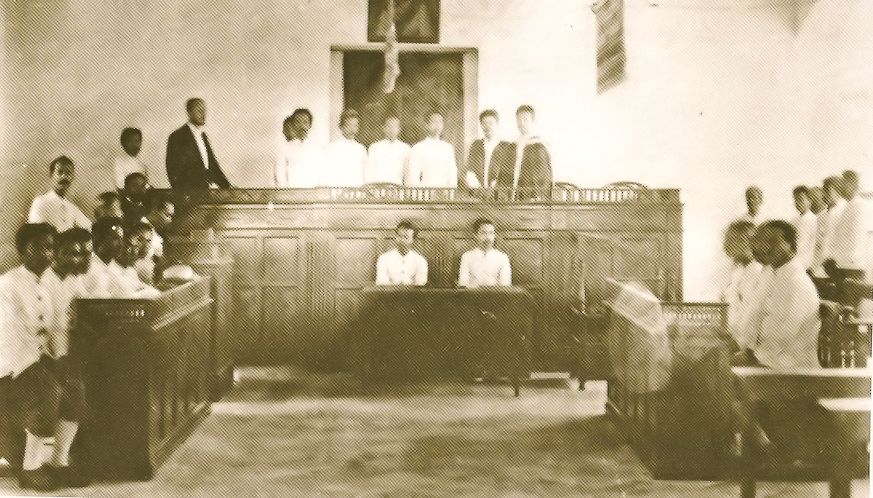
Abb.: Gericht
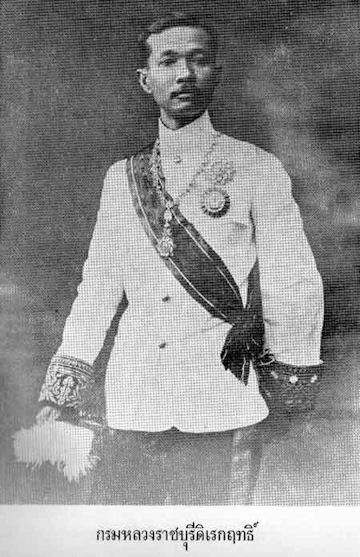
Abb.: Justizminister Prinz Raphi Phatthanasak Krommaluang Ratchaburi
Direk Rit (พระเจ้าบรมวงศ์เธอ พระองค์เจ้ารพีพัฒนศักดิ์ กรมหลวงราชบุรีดิเรกฤทธิ์,
1874 - 1920)
[Bildquelle: th.Wikipedia. -- Public domain]
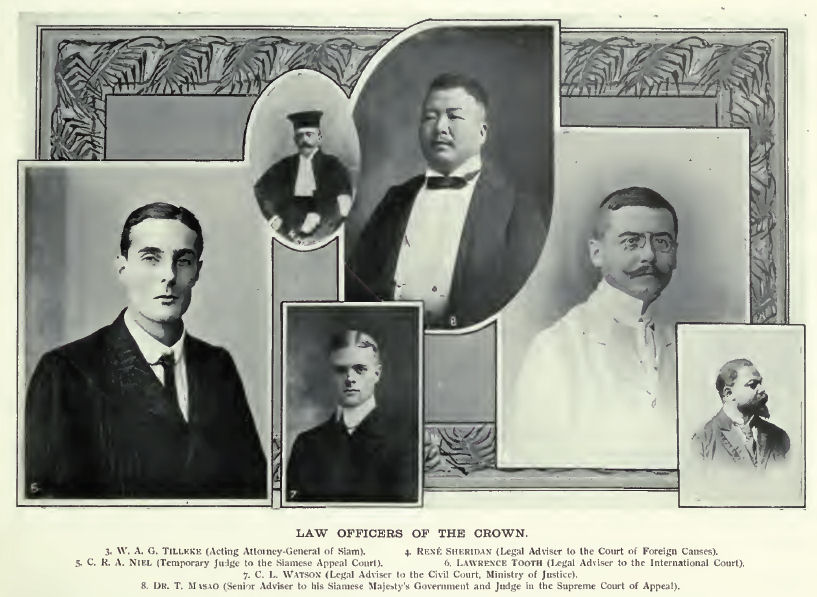
Abb.: Rechtspfleger Siams: 3. W. A. G. Tillkke (Acting Attorney-General of
Siam). 4. Rene SHERIDAN (Legal Adviser to the Court of Foreign Causes). 5. C. R.
A. Niel (Temporary Judge to the Siamese Appeal Court). 6. Lawrence Tooth (Legal
Adviser to the International Court). 7. C. L. Watson (Legal Adviser to the Civil
Court, Ministry of Justice). 8. Dr. T. Masao (Senior Adviser to his Siamese
Majesty's Government and Judge in the Supreme Court of Appeal).
[Bildquelle: Twentieth century impressions of Siam : its history, people,
commerce, industries, and resources / ed. in chief: Arnold Wright. -- London
[etc.] : Lloyds, 1908. -- S. 95.]
Zu den Gerichten Siams um 1908:
"THE administration of the law is in the hands of the Minister of Justice, who, in the words of the Act constituting the courts of justice, has a controlling and correctional power in all matters arising out of cases, and is responsible for the due and equitable trial and adjudication of all actions and suits as opposed to responsibility for the actual conduct of the trial. The present minister is Prince Rajaburi, who graduated at Oxford with honours in law about fifteen years ago. He has been minister for the past twelve years.
The highest court is the Dika Court, which is responsible to his Majesty the king and is equivalent to a Supreme Court of Appeal.
In Bangkok there are several courts, viz., a Civil Court, a Criminal Court, and three Police Courts which are also courts of preliminary inquiry into cases of serious offences.
In the provinces there are the Provincial Courts, which are divided into three classes : the Monthon Court, the Muang Court, and the Kweng Court.
There are two Appeal Courts in Bangkok, one for the hearing of the Bangkok appeals and the other for the hearing of appeals from the Provincial Courts.
The jury system is not known, but as a rule the courts of Bangkok are presided over by four or five judges, while the Provincial Courts have two or three judges according to the status of the court.
There are also International Courts which try cases in which a subject of a foreign Power is plaintiff and a Siamese subject the defendant.
Regarding the appointment of judges, the Act says that no appointment, promotion, or other removal of any judge shall be made without the pleasure of his Majesty the king being first obtained through the Minister of Justice.
There is also a Department of Public Prosecution in Bangkok, which is placed under the Ministry of Justice, while the provincial public prosecutors are under the Ministry of Interior.
The appointment of the Attorney-General and Assistant Attorney-General for Bangkok lies with his Majesty the king, while the public prosecutors for Bangkok are appointed by the Attorney-General with the approval of the Minister of Justice.
In addition there is the Department of the Judicial Adviser to the Ministry of Justice, a position now filled by Mr. J. Stewart Black, barrister- at-law, formerly of the British Consular Service.
Again, there is a Legislative Adviser appointed in conformity with a treaty concluded with France. This office is at present held by Monsieur Georges Padoux, who holds the rank of Consul-General in the French service.
In many of the courts there sits a foreign legal adviser whose duty is to advise the judges in any matter of difficulty. These advisers have the full status of judges and draft and sign judgments. The appointment of such advisers, however, is not a matter which is obligatory by any treaty, but is entirely voluntary on the part of the Government, the desire being simply to make the judiciary as efficient as possible. The first duty of the advisers is to learn the language, and they have to pass an examination in Siamese before being attached as adviser to any particular court.
The large majority of the judges are locally educated men. There is a law school in Bangkok which was established by Prince Rajaburi when he became minister, twelve years ago. Each year there is an examination in which about twelve out of a hundred students are successful. Nearly all of these lawyers are at once posted to judgeships, and thus the judiciary is formed.
H.B.M.'s COURT FOR SIAM.
Under the treaty at present in force between Great Britain and Siam all British subjects in Lower Siam are justiciable in a British court, and those in Upper Siam in a specially constituted international court. In Lower Siam the British court was, until 1903, presided over by consular officers ; in that year, by an Order in Council (amended in 1906), "H.B.M.'s Court for Siam" was created, with a judge and an assistant judge who have to be barristers. The present holders of these posts are their Honours Judges Skinner Turner and A. R. Vincent, and from their decisions there is an ultimate appeal to the Privy Council in London."
[Bildquelle: W. A. G. Tilleke. -- In: Twentieth century impressions of Siam : its history, people, commerce, industries, and resources / ed. in chief: Arnold Wright. -- London [etc.] : Lloyds, 1908. -- S. 94ff.]
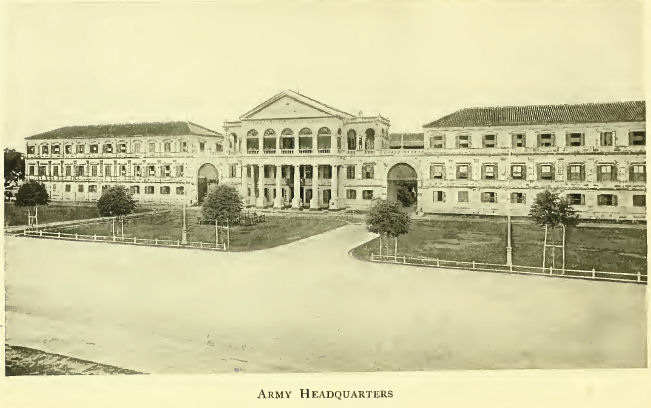
Abb.: Armee-Hauptquartier
[Bildquelle:
The kingdom of Siam : Ministry of
Agriculture, Louisiana Purchase Exposition, St. Louis, U.S.A., 1904 ; Siamese
section / ed. by A. Cecil Carter. -- New York: Putnam’s Sons, 1904. -- Nach S.
164]
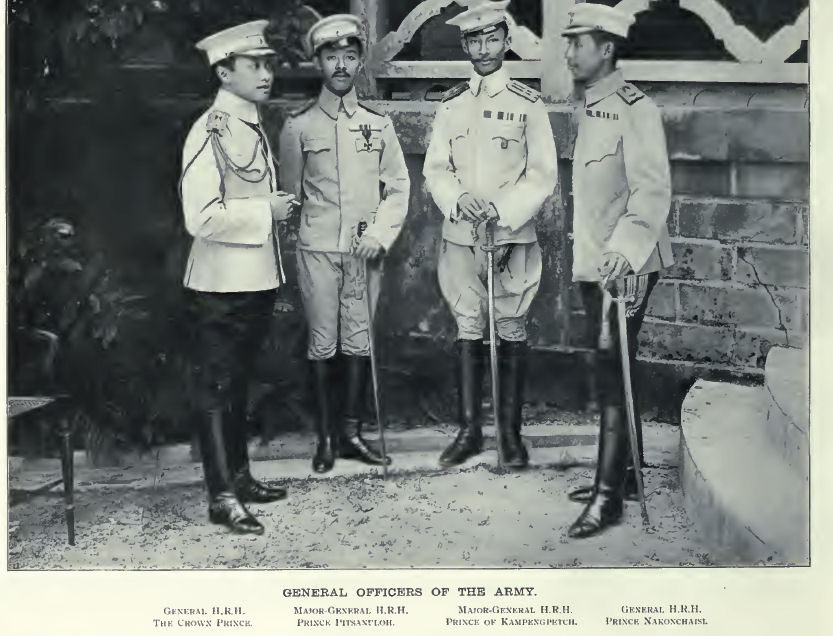
Abb.: Generäle Siams: General H.R.H. The Crown prince, Mayor General H.R.H.
Prince Pitsanuloh (พิษณุโลก),
Mayor General H.R.H. Prince Kampengpetch (กำแพงเพชร),
General H.R.H. Prince Nakonchaisi (นครชัยศรี, heute Nakhon
Pathom - นครปฐม).
[Bildquelle: Twentieth century impressions of Siam : its history, people,
commerce, industries, and resources / ed. in chief: Arnold Wright. -- London
[etc.] : Lloyds, 1908. -- S. 100]
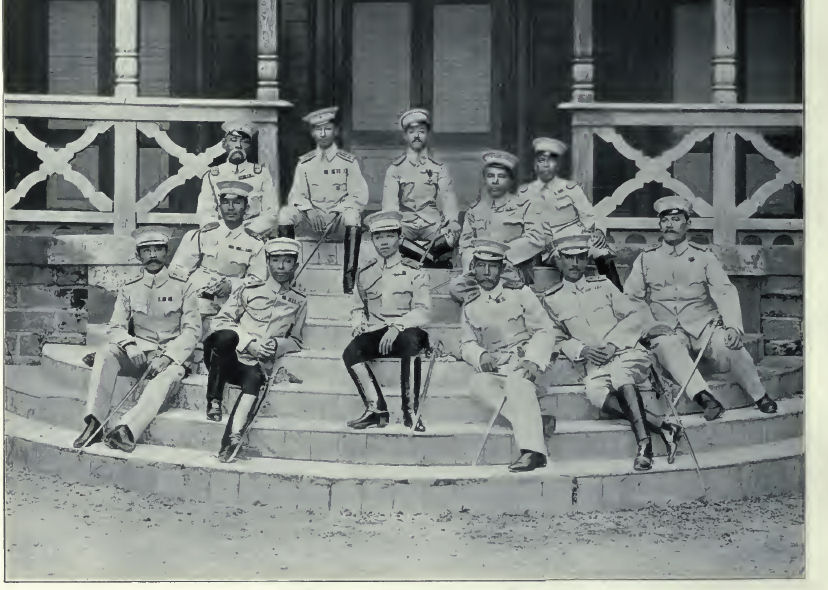
Abb.: Generalstabsoffiziere
[Bildquelle: Twentieth century impressions of Siam : its history, people,
commerce, industries, and resources / ed. in chief: Arnold Wright. -- London
[etc.] : Lloyds, 1908. -- S. 102]
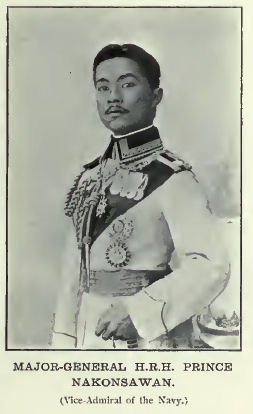
Abb.: Mayor-General H.R.H Prince Nakonsawan (นครสวรรค์),
Vize-Admiral der Marine
[Bildquelle: Twentieth century impressions of Siam : its history, people,
commerce, industries, and resources / ed. in chief: Arnold Wright. -- London
[etc.] : Lloyds, 1908. -- S. 105.]
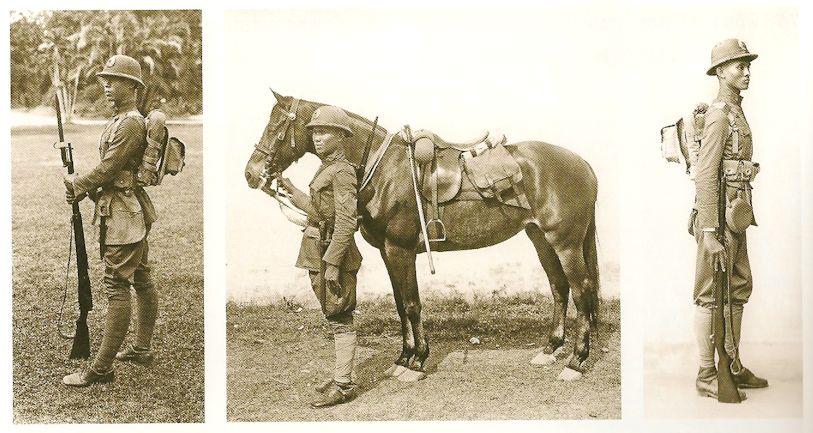
Abb.: Militäruniformen
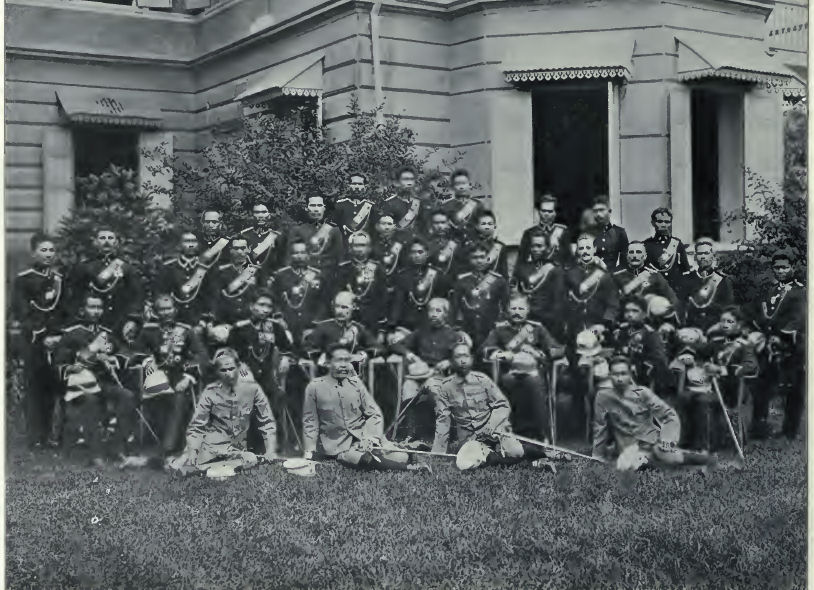
Abb.: Polizei-Offiziere
[Bildquelle: Twentieth century impressions of Siam : its history, people,
commerce, industries, and resources / ed. in chief: Arnold Wright. -- London
[etc.] : Lloyds, 1908. -- S. 108]
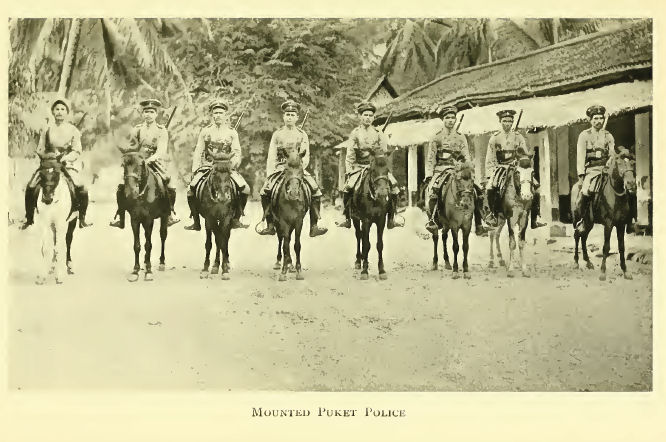
Abb.: Berittene Polizei, Phuket (ภูเก็ต)
[Bildquelle:
The kingdom of Siam : Ministry of
Agriculture, Louisiana Purchase Exposition, St. Louis, U.S.A., 1904 ; Siamese
section / ed. by A. Cecil Carter. -- New York: Putnam’s Sons, 1904. -- Nach S.
74]
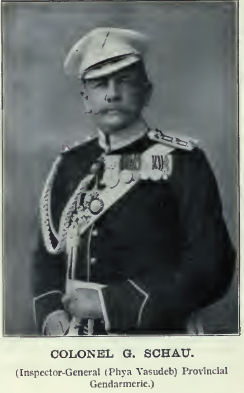
Abb.: Colonel G. Schau, Generalinspekteur der Provinz-Gendarmerie
[Bildquelle: Twentieth century impressions of Siam : its history, people,
commerce, industries, and resources / ed. in chief: Arnold Wright. -- London
[etc.] : Lloyds, 1908. -- S. 110]
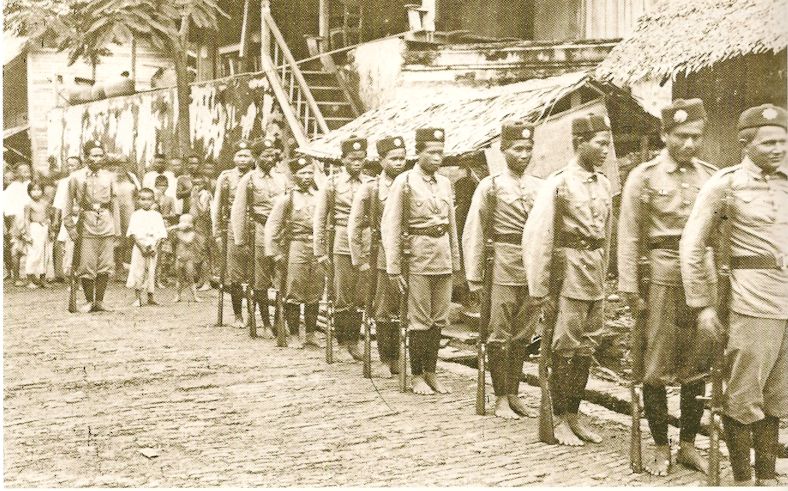
Abb.: Polizei-Drill
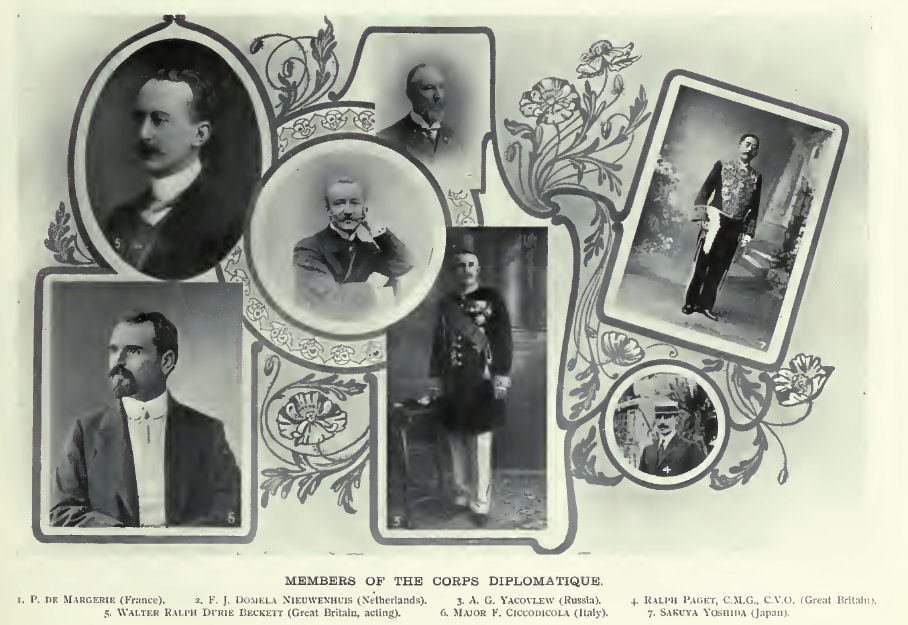
Abb.: Mitglieder des diplomatischen Corps in Siam: 1. P. de Margerie (France),
2. F. J. Domela Nieuwenhuis (Netherlands). 3. A. G. Yacovlew (Russia). 4. Ralph
Paget, C.M.G., C.V.O. (Great Britain). 5. Walter Ralph Durie Beckett (Great
Britain, acting). 6. Major F. Ciccodicola (Italy). 7. Sakuya Yoshida (Japan).
[Bildquelle: Twentieth century impressions of Siam : its history, people,
commerce, industries, and resources / ed. in chief: Arnold Wright. -- London
[etc.] : Lloyds, 1908. -- S. 97]
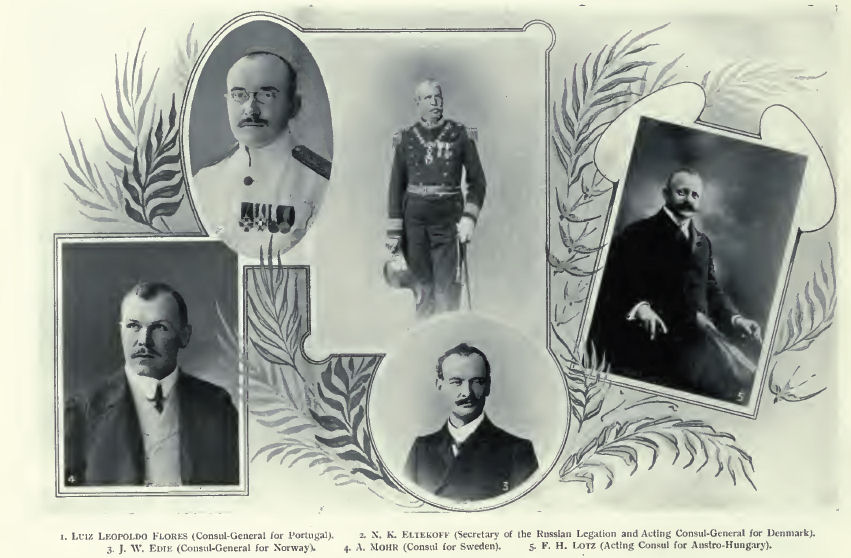
Abb.: Mitglieder des diplomatischen Corps in Siam: 1. Luiz Leopoldo Flores (Consul-General
for Portugal). 2. N. K. Eltekoff (Secretary of the Russian Legation and Acting
Consul-General for Denmark). 3. J. W. Edie (Consul-General for Norway). 4. A.
Mohr (Consul for Sweden). 5. F. H. Lorz (Acting Consul for Austro-Hungary).[Bildquelle:
Twentieth century impressions of Siam : its history, people, commerce,
industries, and resources / ed. in chief: Arnold Wright. -- London [etc.] :
Lloyds, 1908. -- S. 98]
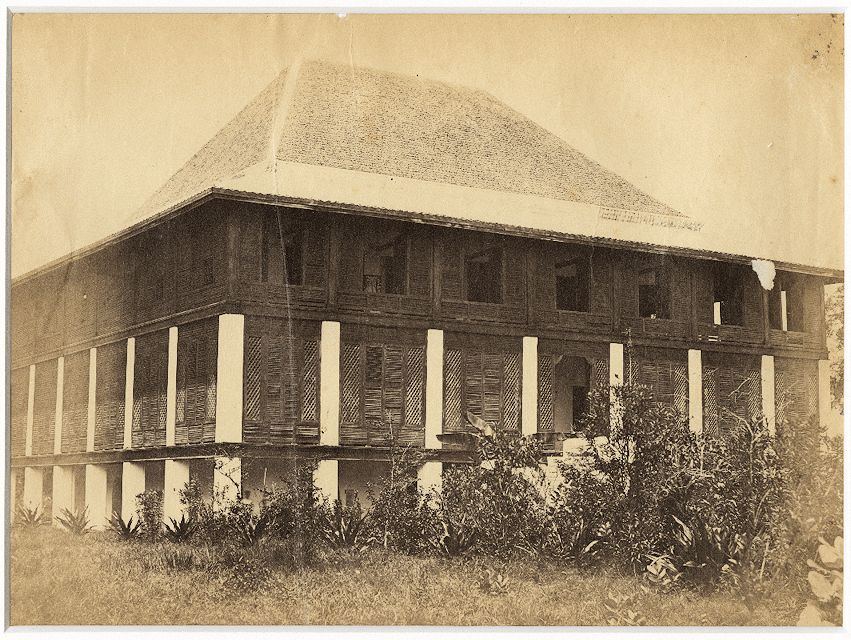
Abb.: Residenz des britischen Konsuls, ca. 1900
"The first step was the formation of an Education Department, whose duty was to organise the system of elementary instruction throughout the country. H.R.H. Prince Damrong, the present Minister of the Interior, was appointed the first director of this new department. A good beginning was made ; several schools were founded in the capital, and a foundation was laid of a Text Book Department, which was all the more necessary because no such books for elementary instruction were in existence. Unfortunately, Prince Damrong was very early transferred from this position to take up the organisation of the Ministry of the Interior, and for some years after this the record of the department shows a state of general inactivity. In the last ten years, however, great progress has been made, and it is safe to say that few other countries can show such rapid and real progress in their, what may be called, educational infancy as Siam has displayed during this period. Courses of instruction have been drawn up and a large number of schools opened. As a foundation, the department recognises that every child should receive at least that certain minimum of instruction which will enable it to carry on the ordinary activities of every-day life ; further, that wherever possible this instruction shall be given by the priests in the temples, thus helping to strengthen that bond between religion and education which is so necessary and desirable to Siam. Siam has progressed so rapidly of late years, and the machinery of Government has been reorganised and perfected so quickly, that it requires all the efforts of the Education Department to produce from its schools the supply of men capable of taking up the posts in the Government service. In spite of the rapid progress made, it cannot yet be said that the schools are able to fully supply the needs of the service, the consequence being that a great number of posts are at present filled by foreigners. It is hoped as education progresses that more and more of these posts may be filled by the students trained in the Government schools.
General Plan of Courses of Studies.
The scheme of studies laid down by the Education Department and in use at the present time includes the following courses for boys :—
Lower Primary Course.—A three years' course in the vernacular, giving the minimum amount of instruction considered absolutely necessary for all boys without exception. In the Lower Primary branch of the English schools this course includes also first steps in the English language.
Primary Course.—Two courses.
Course 1—A three years' course in the vernacular, an extension of the Lower Primary course ; being also a preparatory course for boys who intend to proceed to the Secondary Schools. This course contains no English.
Course 2—A three years' course in the vernacular, parallel to Course I, but containing elementary instruction in English ; a preparatory course for boys proceeding to Secondary English schools (i.e., Secondary Course 3).
Secondary Courses.—Three courses.
Course 1—A three years' literary course following on naturally from Primary Course 1 and including English. This course is more a literary than a science course, and is intended for boys wishing to take up Government appointments as clerks, &c.
Course 2—A three years' course following on naturally from Primary Course 1, but of a more modern character than Secondary Course 1, more attention being given to English, mathematics, and science subjects than in Course 1 (secondary). Intended as a fitting preparation for boys about to specialise in the following technical branches —army, navy, engineering, surveying, medicine, forestry, &c, &c.
Course 3—A foreign language course of five years, more advanced than Course 2 above, preparing boys for special technical studies and for study abroad. The chief medium of instruction is English.
The foregoing courses cover the scheme for general education. In addition to the above, special courses are laid down for and followed by the Technical Schools under the Department, viz., Normal College for Teachers and the Medical College.
The chief improvements in school studies made during recent years may be briefly summarised as follows :—
- Much more attention is paid to moral teaching in all grades.
- Antiquated methods of teaching are being gradually superseded.
- More attention is given to modern subjects and to the teaching of English and drawing.
- Increasing prominence is given to physical education. Systematic courses in gymnastics and physical and military drill are laid down and school sports receive suitable encouragement.
- Schools are encouraged to form libraries to be used by the scholars for private reading. At the end of A. D. 1907 there were twenty-seven schools with such libraries."
[Quelle: W. G. Johnson in: Twentieth century impressions of Siam : its history, people, commerce, industries, and resources / ed. in chief: Arnold Wright. -- London [etc.] : Lloyds, 1908. -- S. 226f.]
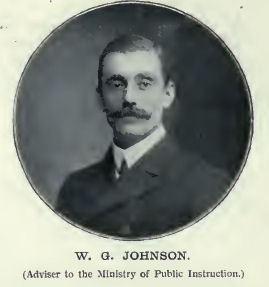
Abb.: W. G. Johnson, Berater beim Unterrichtsministerium
[Bildquelle: Twentieth century impressions of Siam : its history, people,
commerce, industries, and resources / ed. in chief: Arnold Wright. -- London
[etc.] : Lloyds, 1908. -- S. 226]
![]()
Abb.: Siamesischer Schreibstift aus Bambus geschnitzt, am Schnabel gekehlt.
[Bildquelle: Meyers Großes Konversations-Lexikon, 1905]

Abb.: Siamesische Fettkreide zum Beschreiben von schwarzem, aus Holzkohle und
Baumwolle gemachtem Papier.
[Bildquelle: Meyers Großes Konversations-Lexikon, 1905]
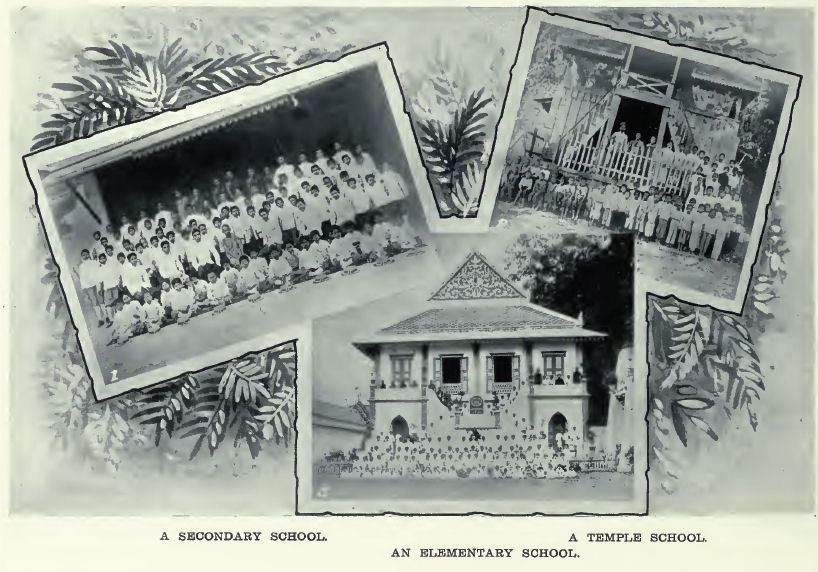
Abb.: Schulen: Tempel-Schule, Grundschule, Sekundarschule
[Bildquelle: Twentieth century impressions of Siam : its history, people,
commerce, industries, and resources / ed. in chief: Arnold Wright. -- London
[etc.] : Lloyds, 1908. -- S. 228]
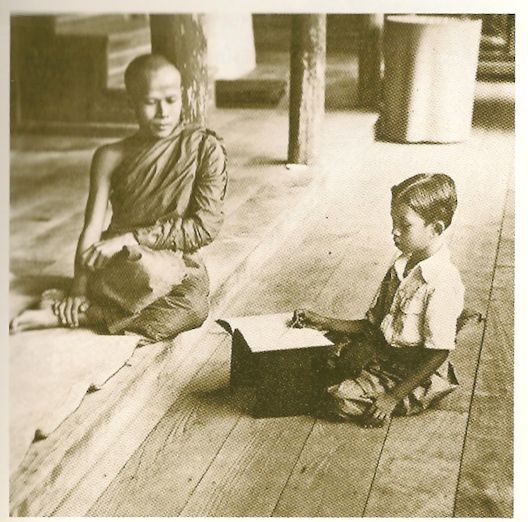
Abb.: Tempelschule
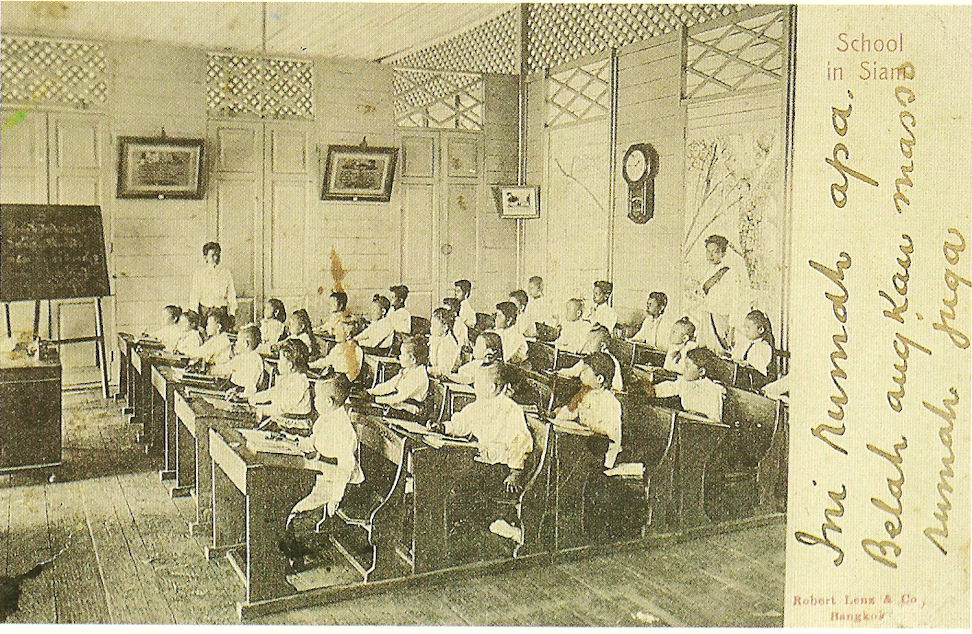
Abb.: Bangkok um 1900: Schule für die Oberschicht im Rose-Garden-Palast (พระตำหนักสวนกุหลาบ), Postkarte um 1900
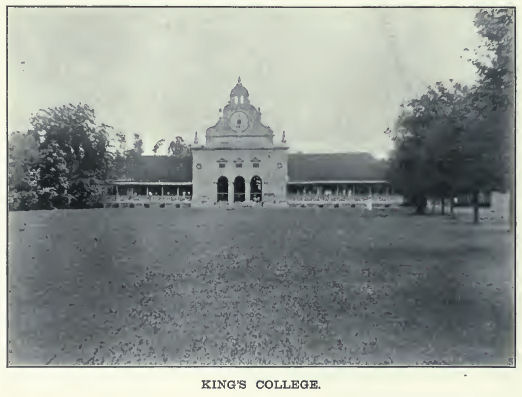
Abb.: King's College, Bangkok
[Bildquelle: Twentieth century impressions of Siam : its history, people,
commerce, industries, and resources / ed. in chief: Arnold Wright. -- London
[etc.] : Lloyds, 1908. -- S. 226]
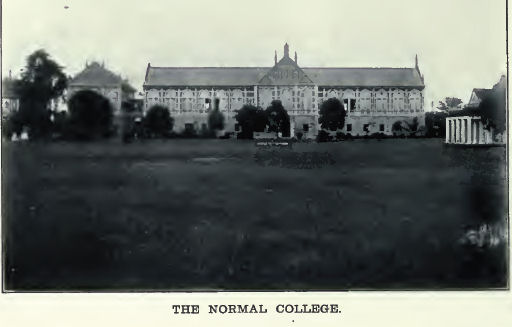
Abb.: Normal College, Bangkok
[Bildquelle: Twentieth century impressions of Siam : its history, people,
commerce, industries, and resources / ed. in chief: Arnold Wright. -- London
[etc.] : Lloyds, 1908. -- S. 230]
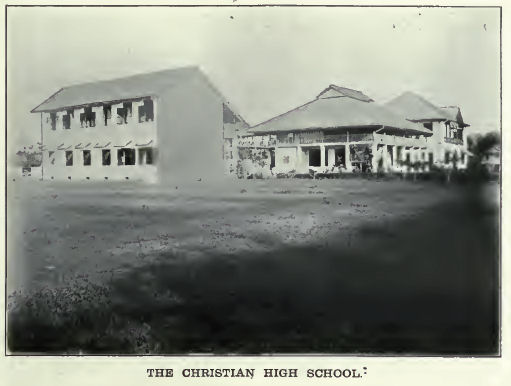
Abb.: Christian High School, Bangkok
[Bildquelle: Twentieth century impressions of Siam : its history, people,
commerce, industries, and resources / ed. in chief: Arnold Wright. -- London
[etc.] : Lloyds, 1908. -- S. 227]
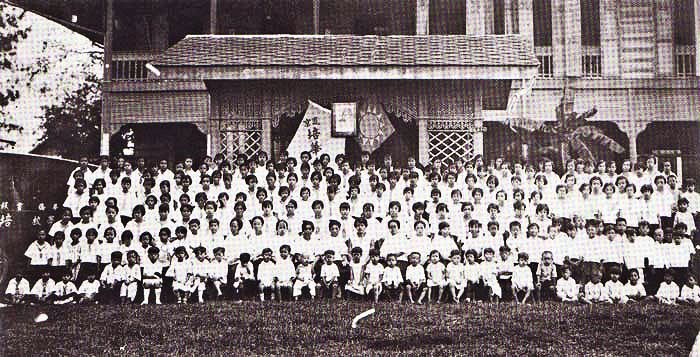
Abb.: Sino-Thai College (Huaia School), 1908
Zu Siam um 1908